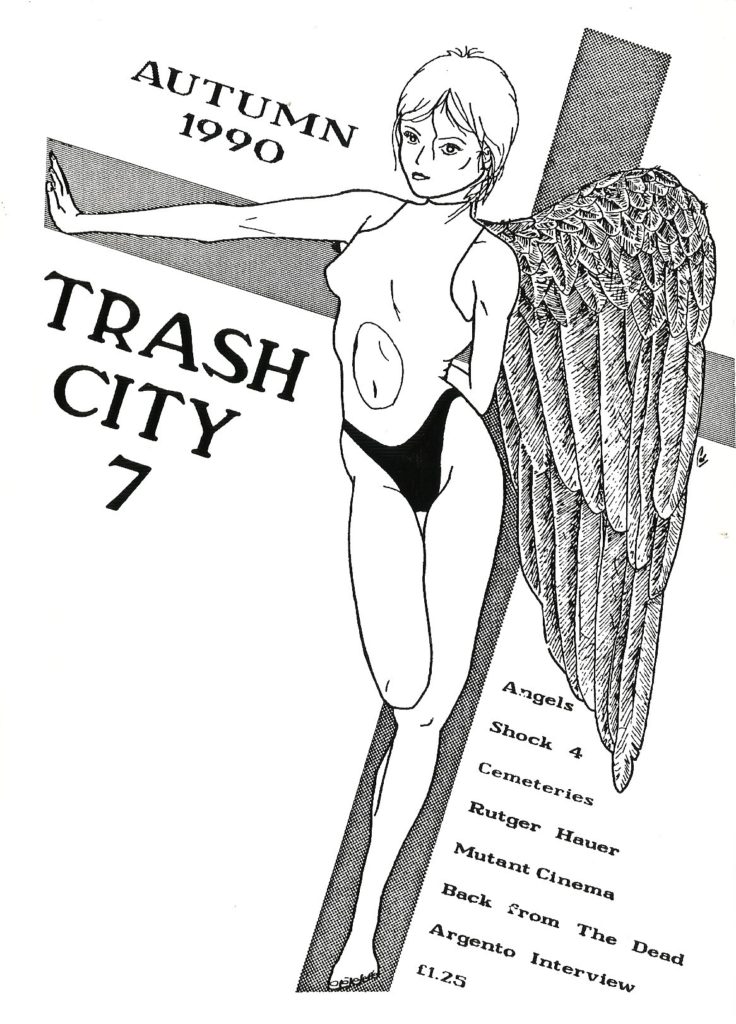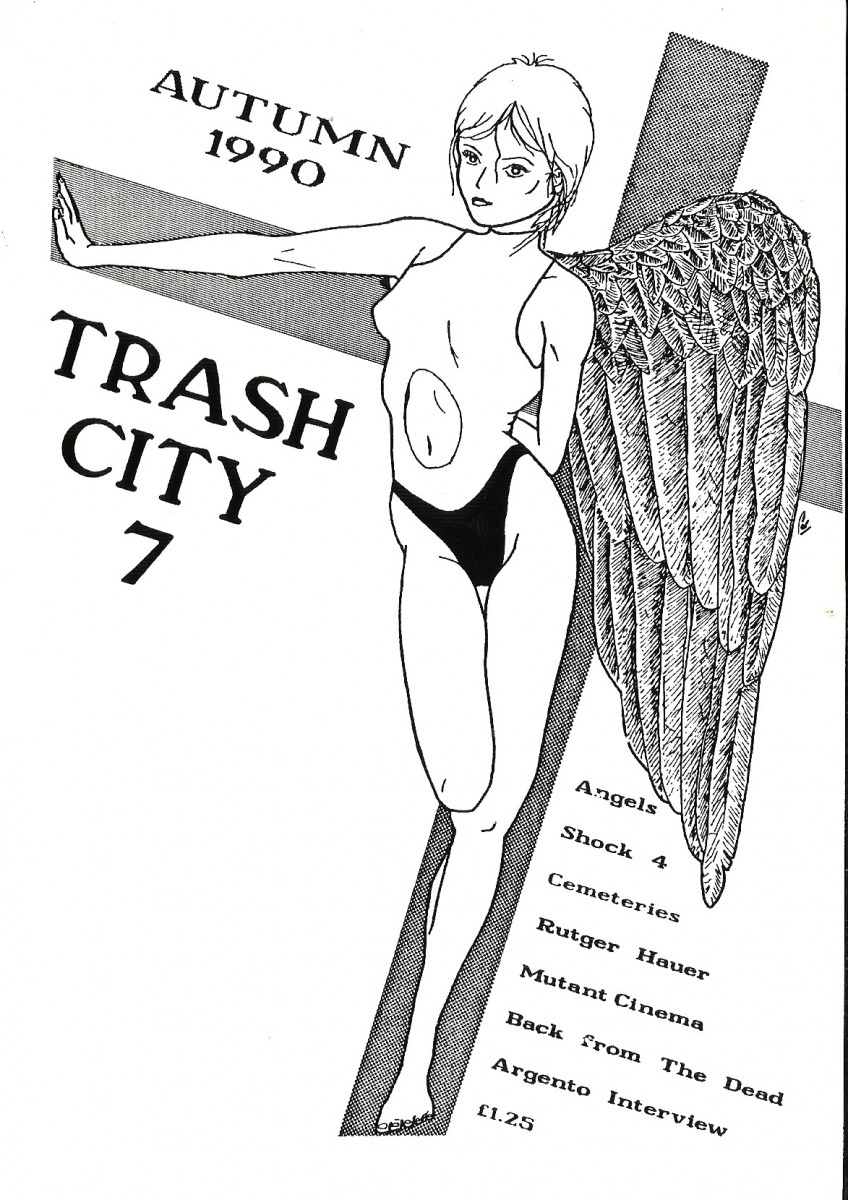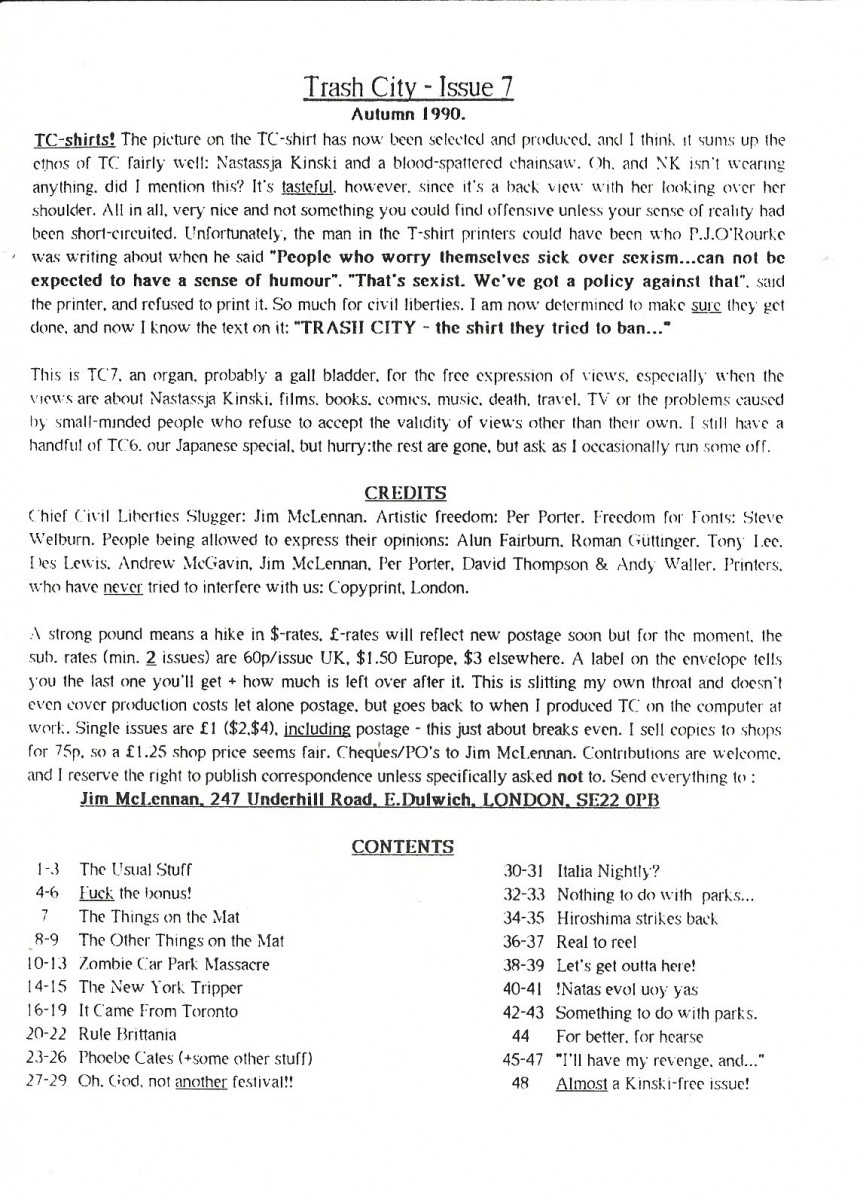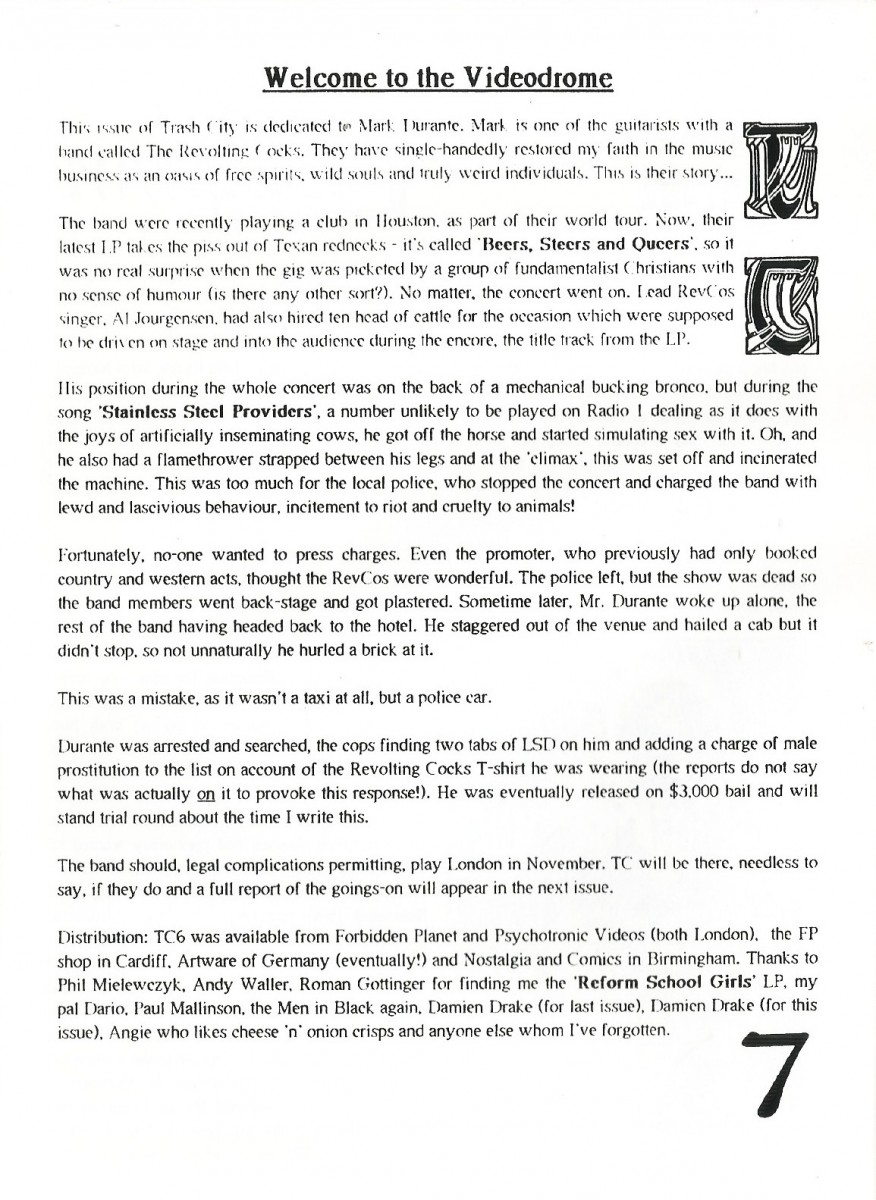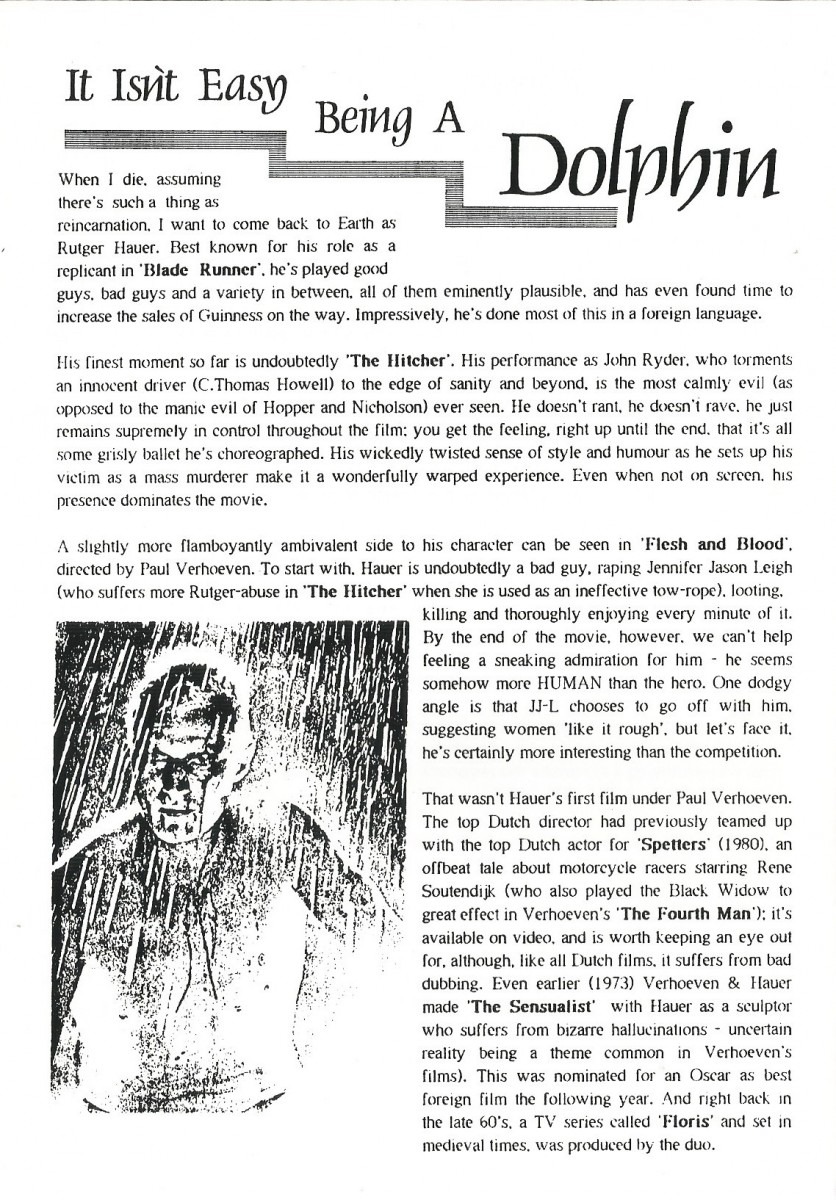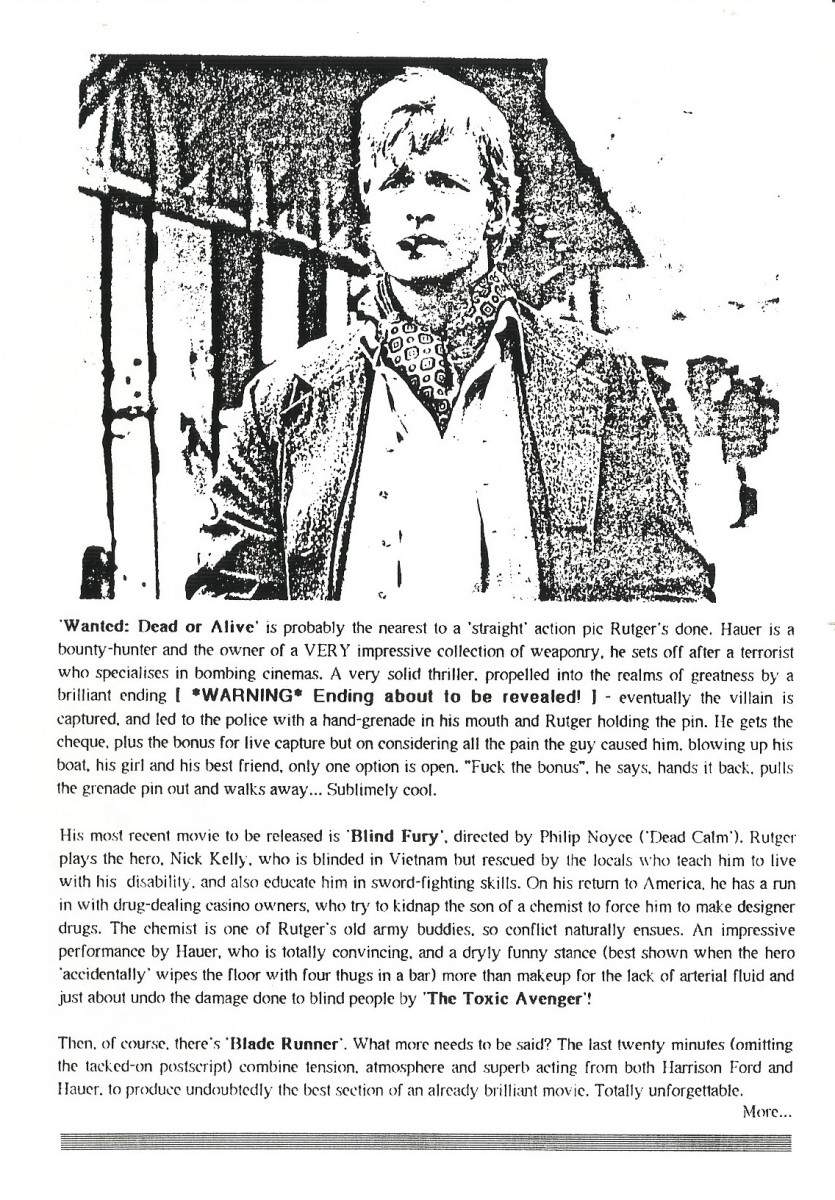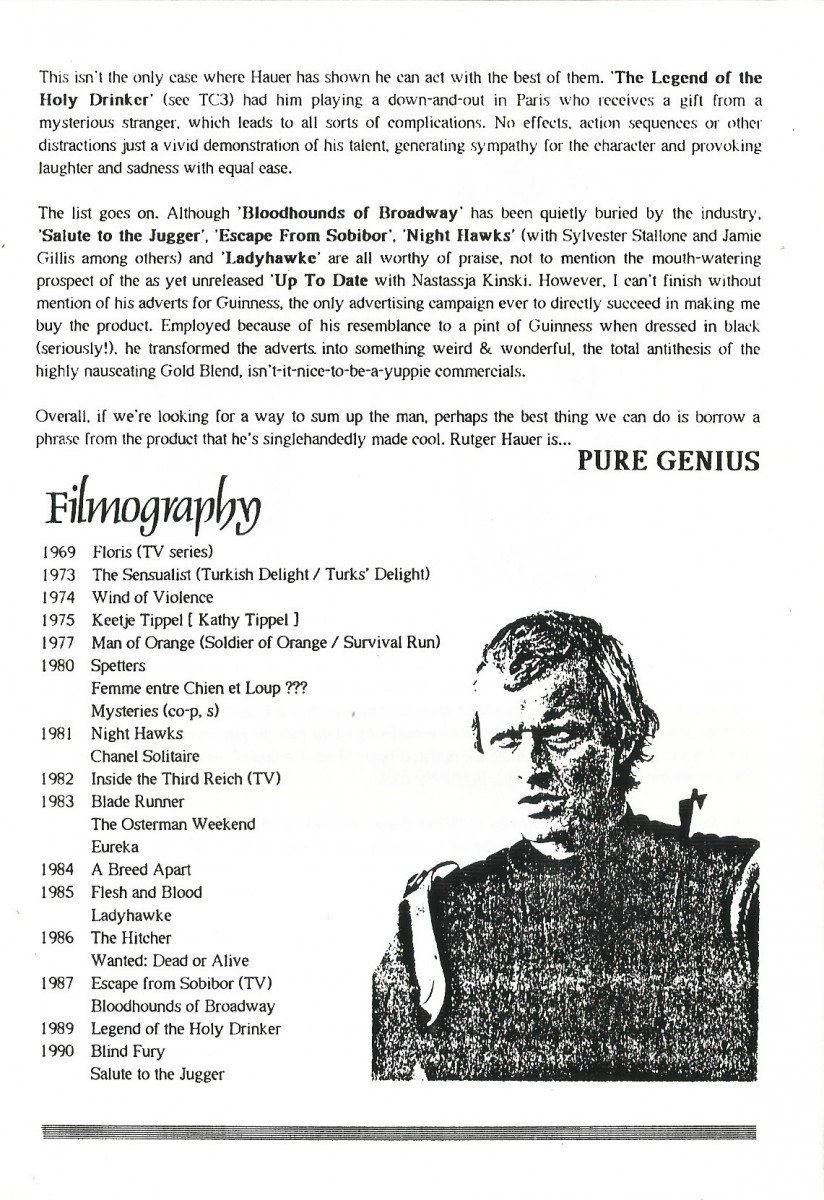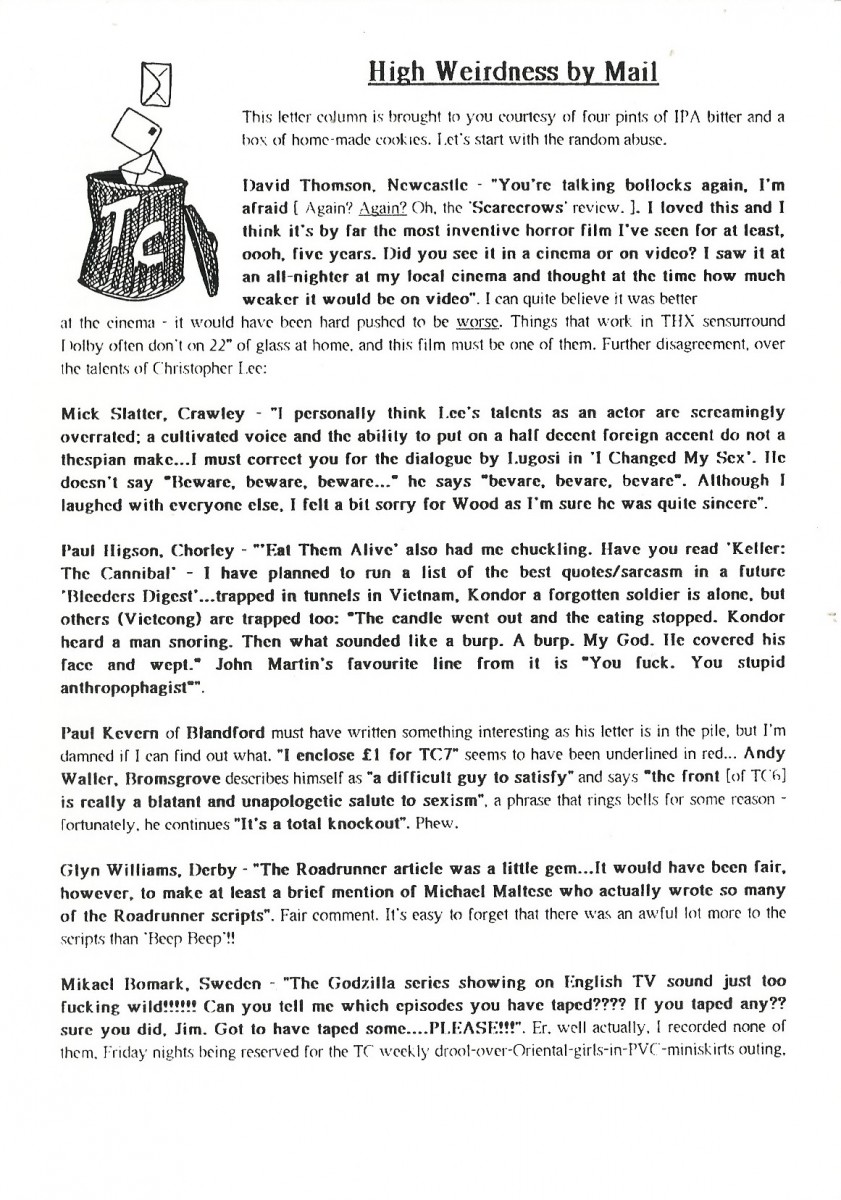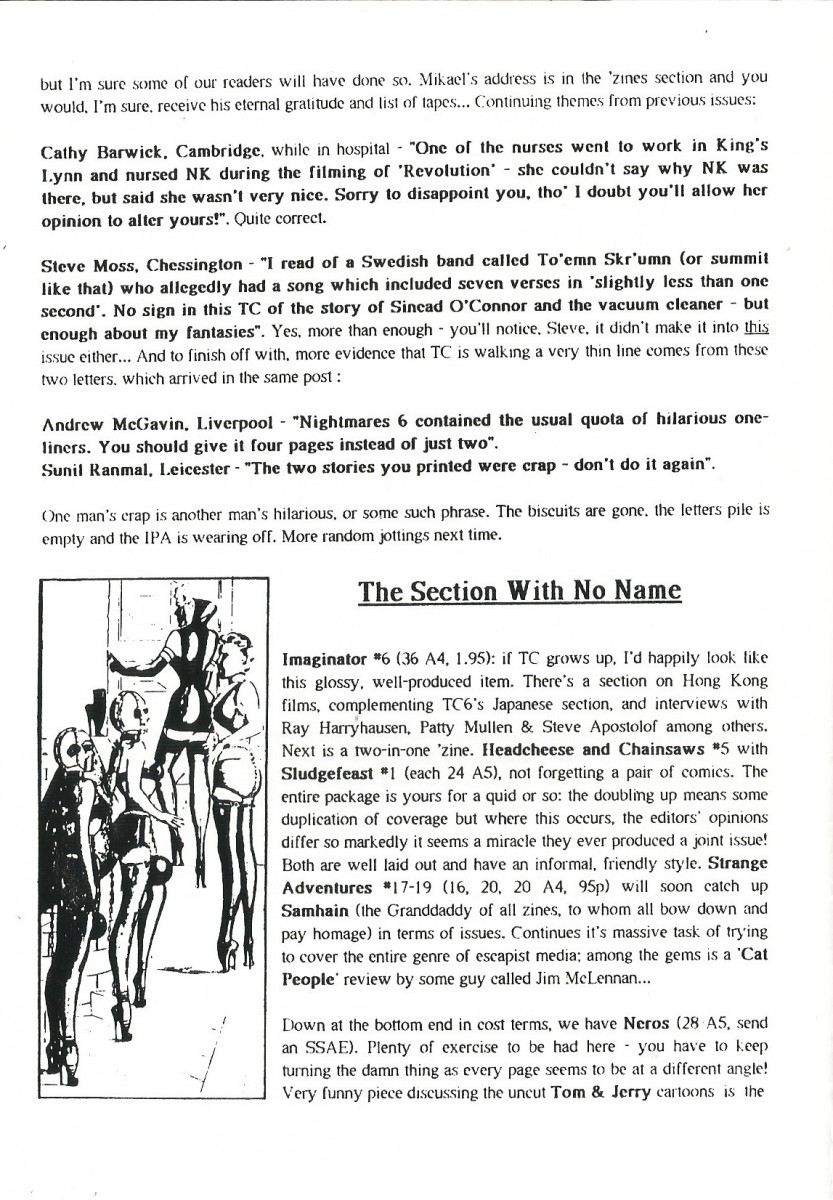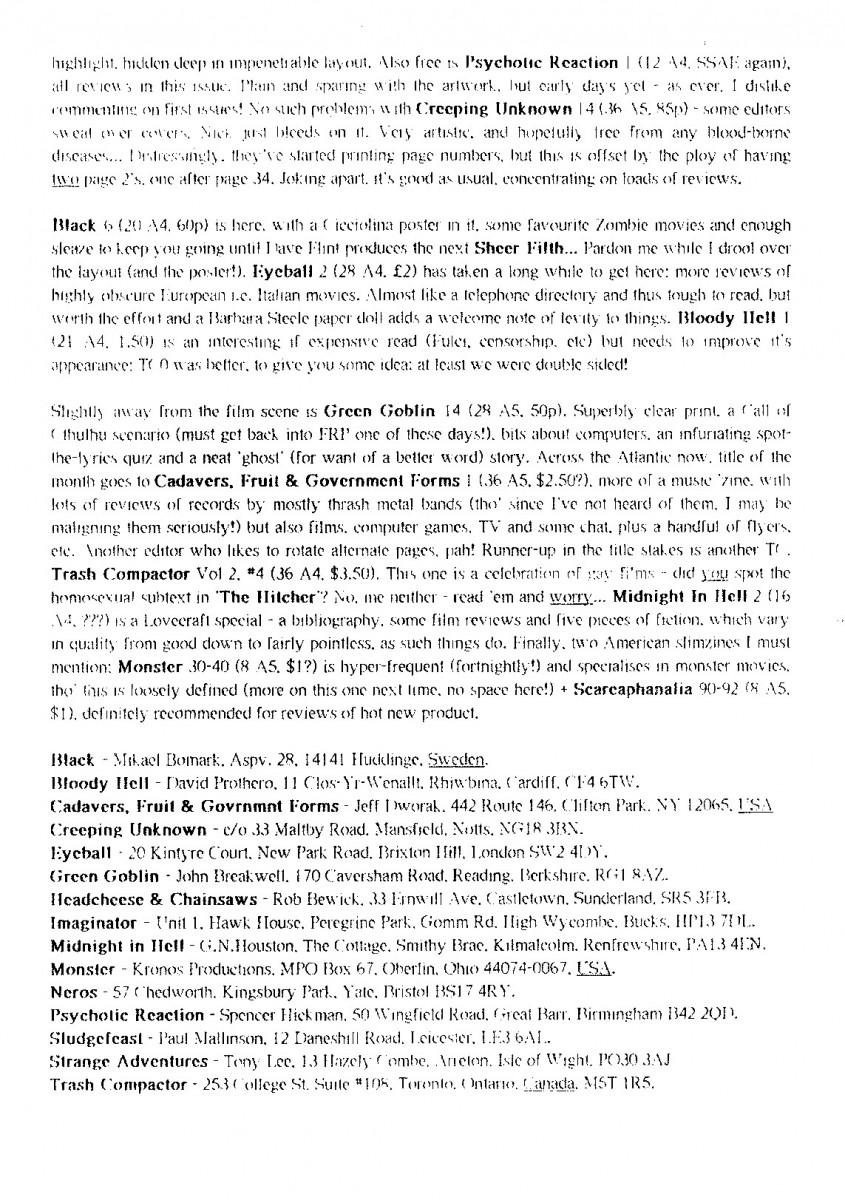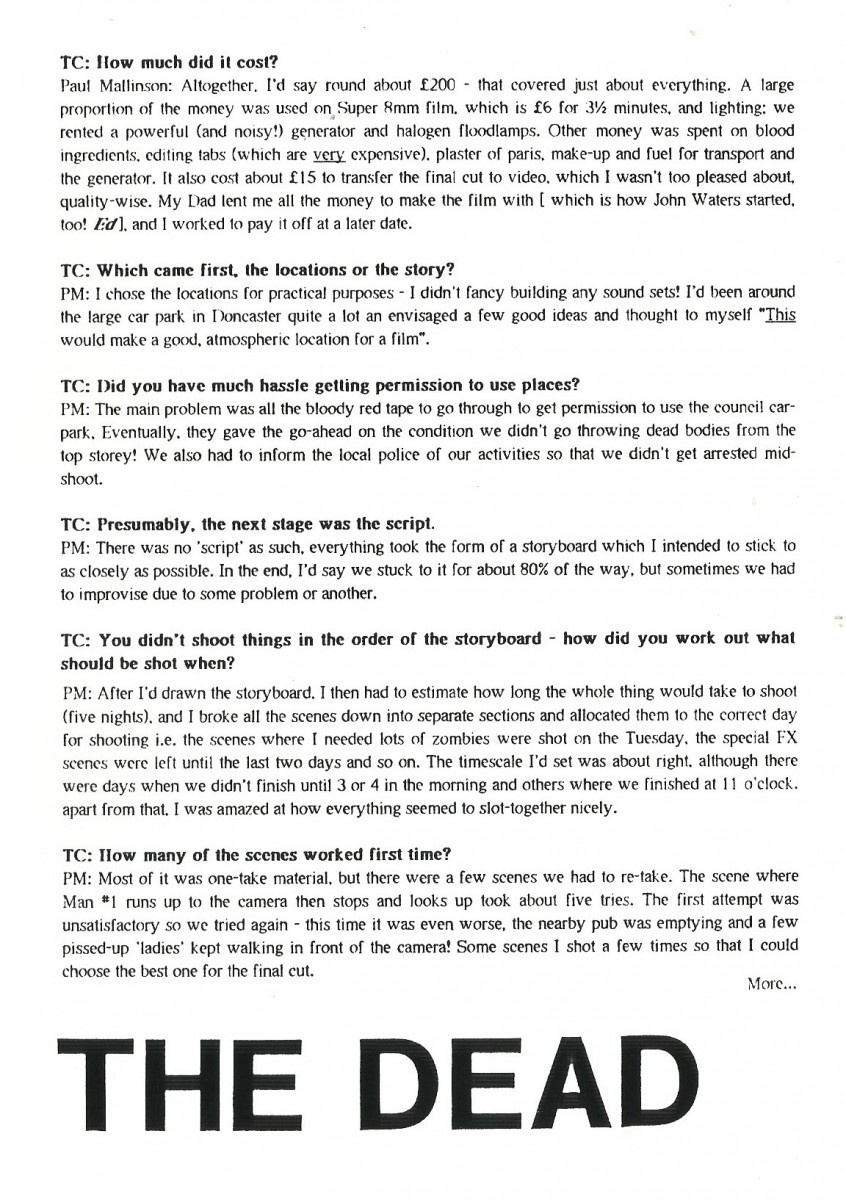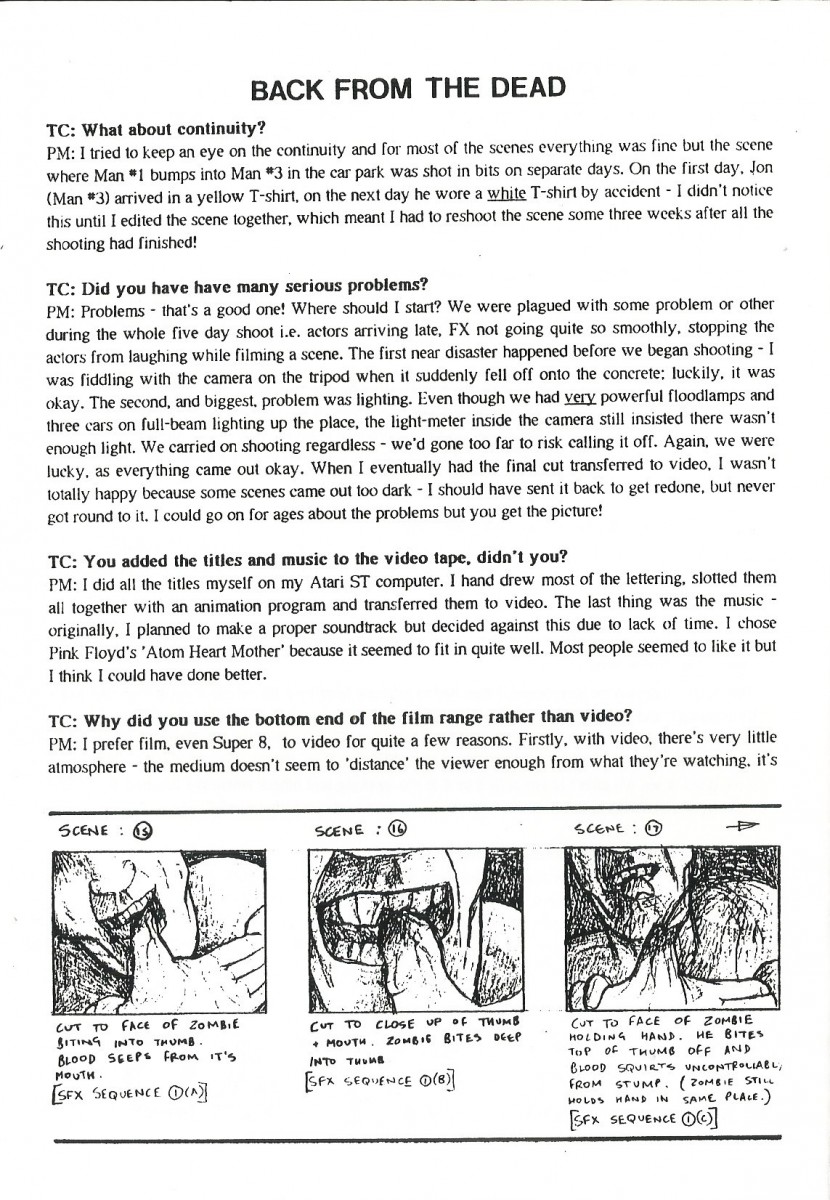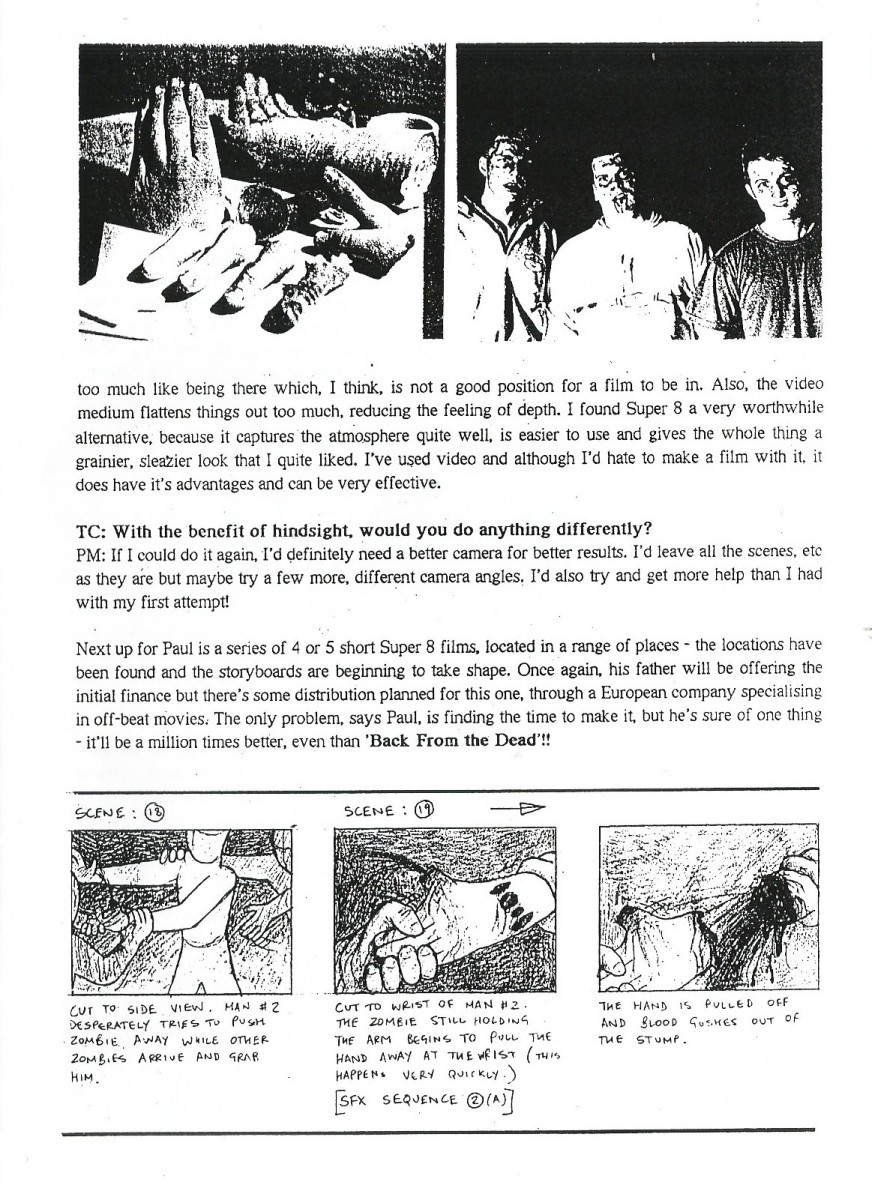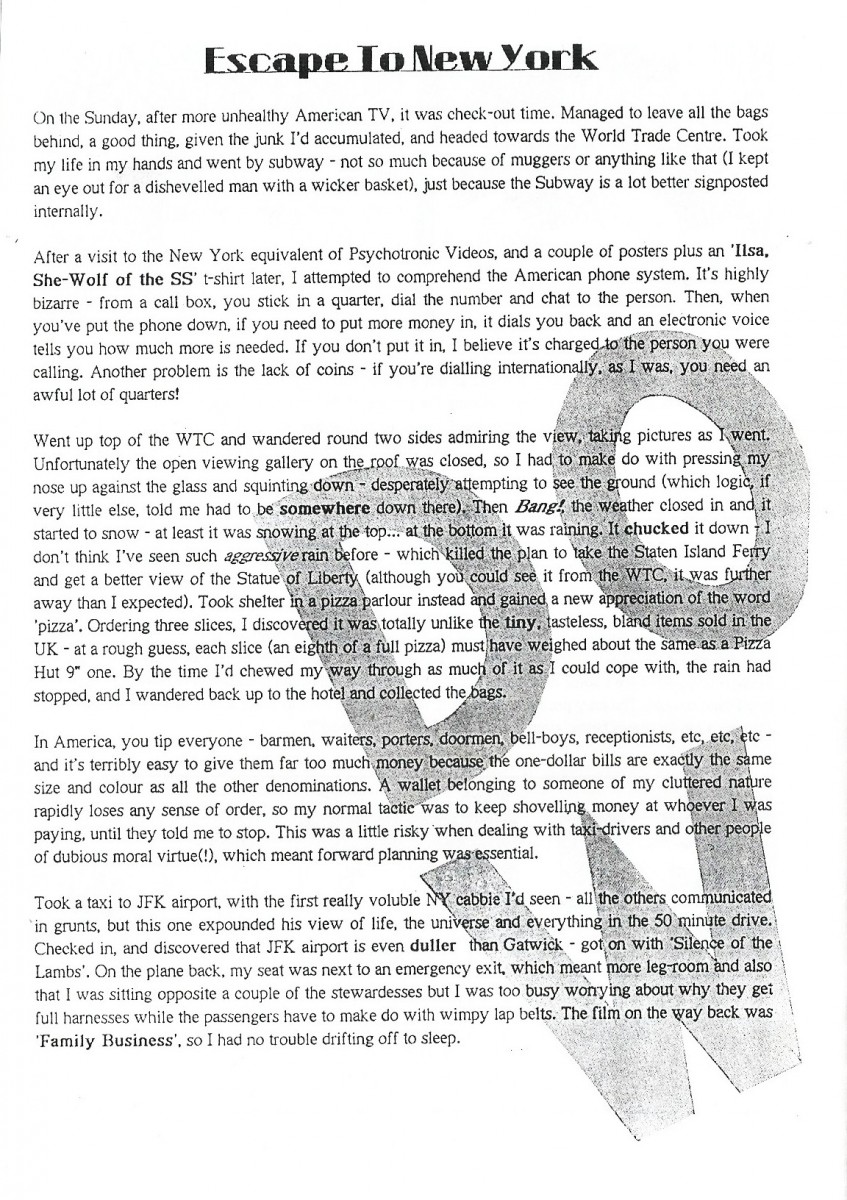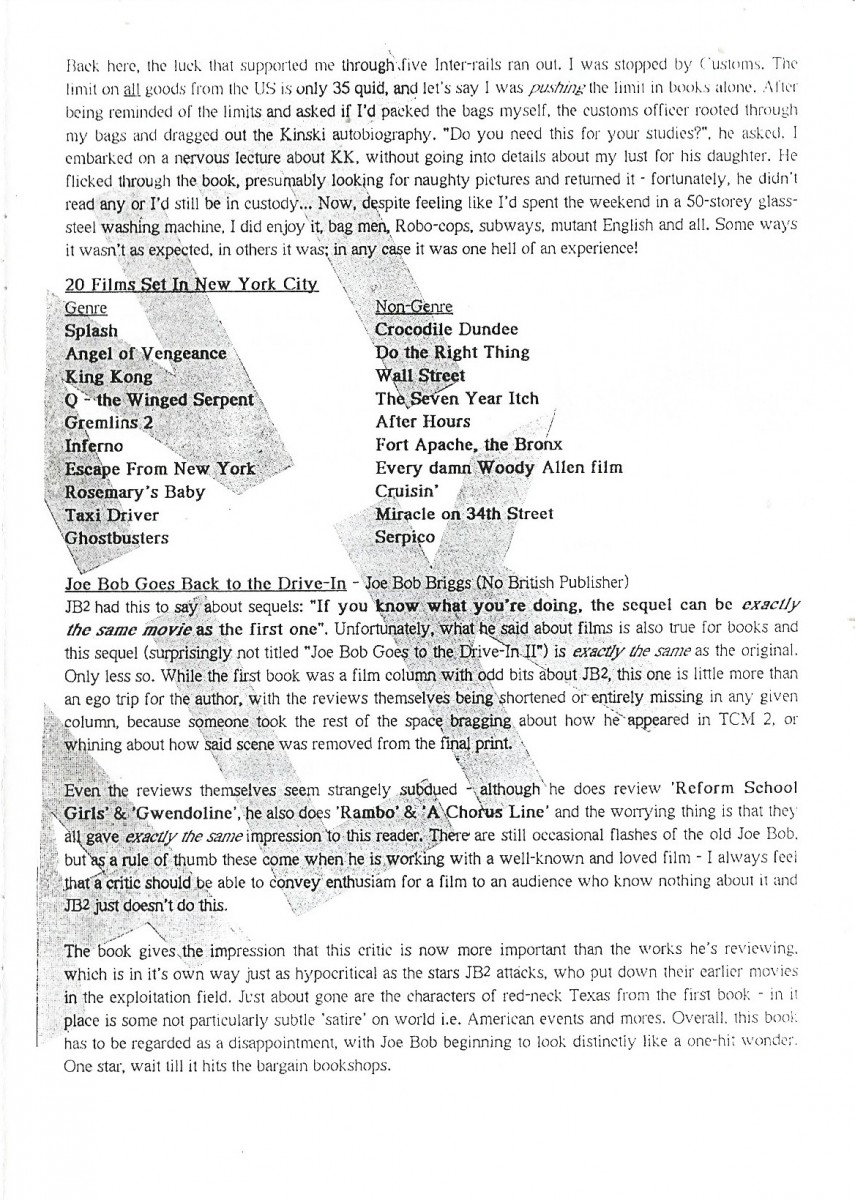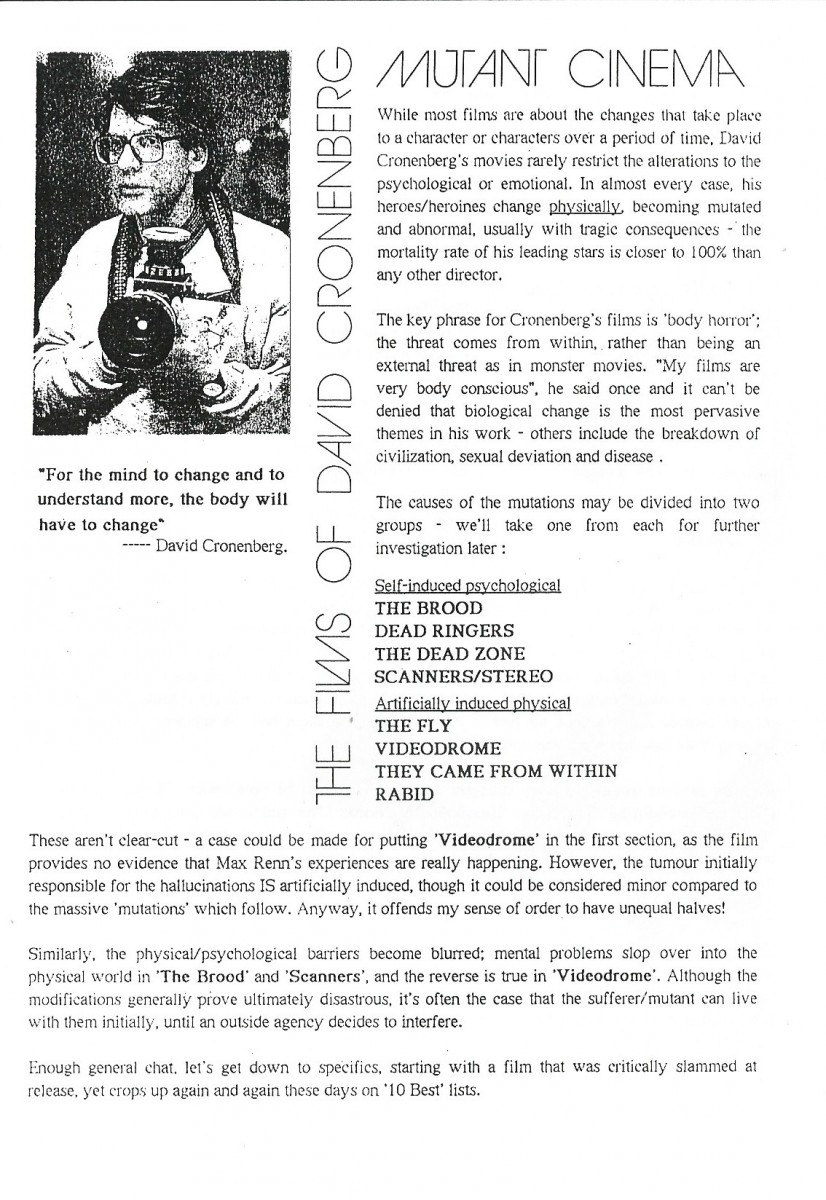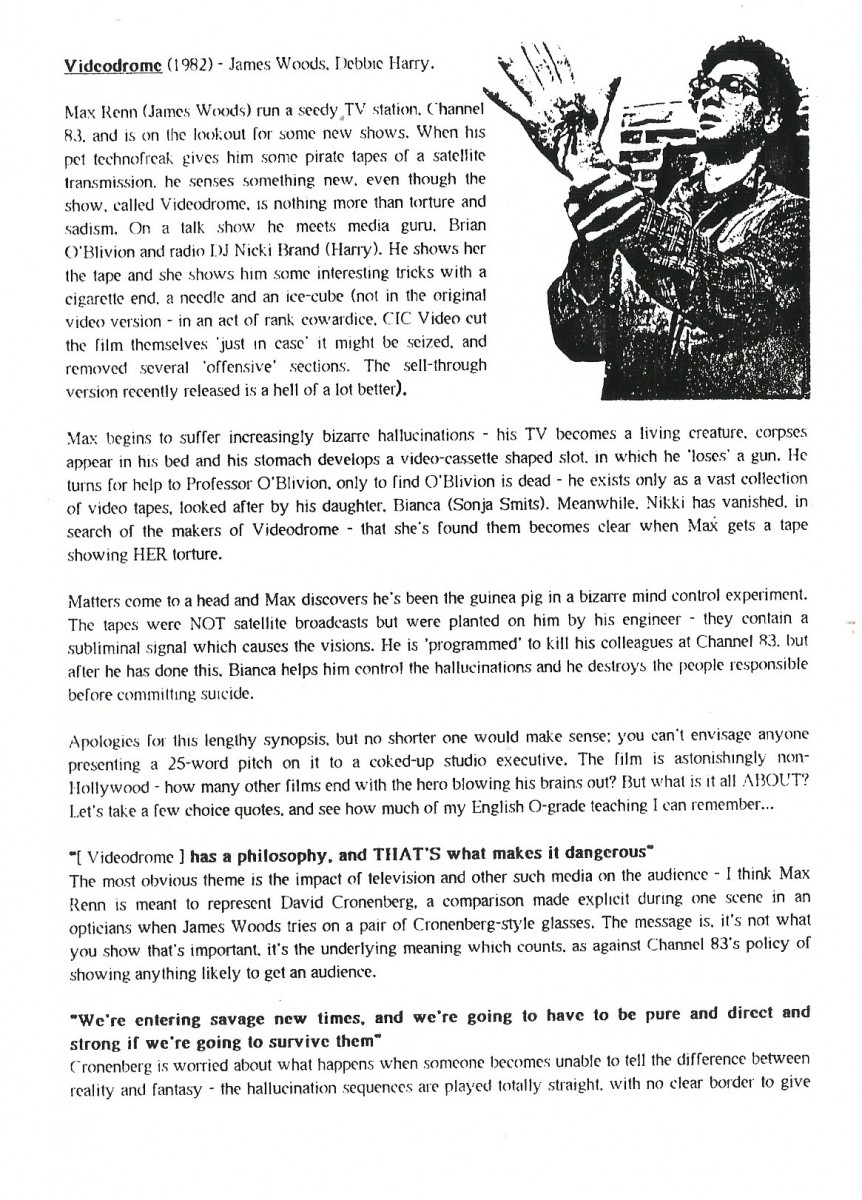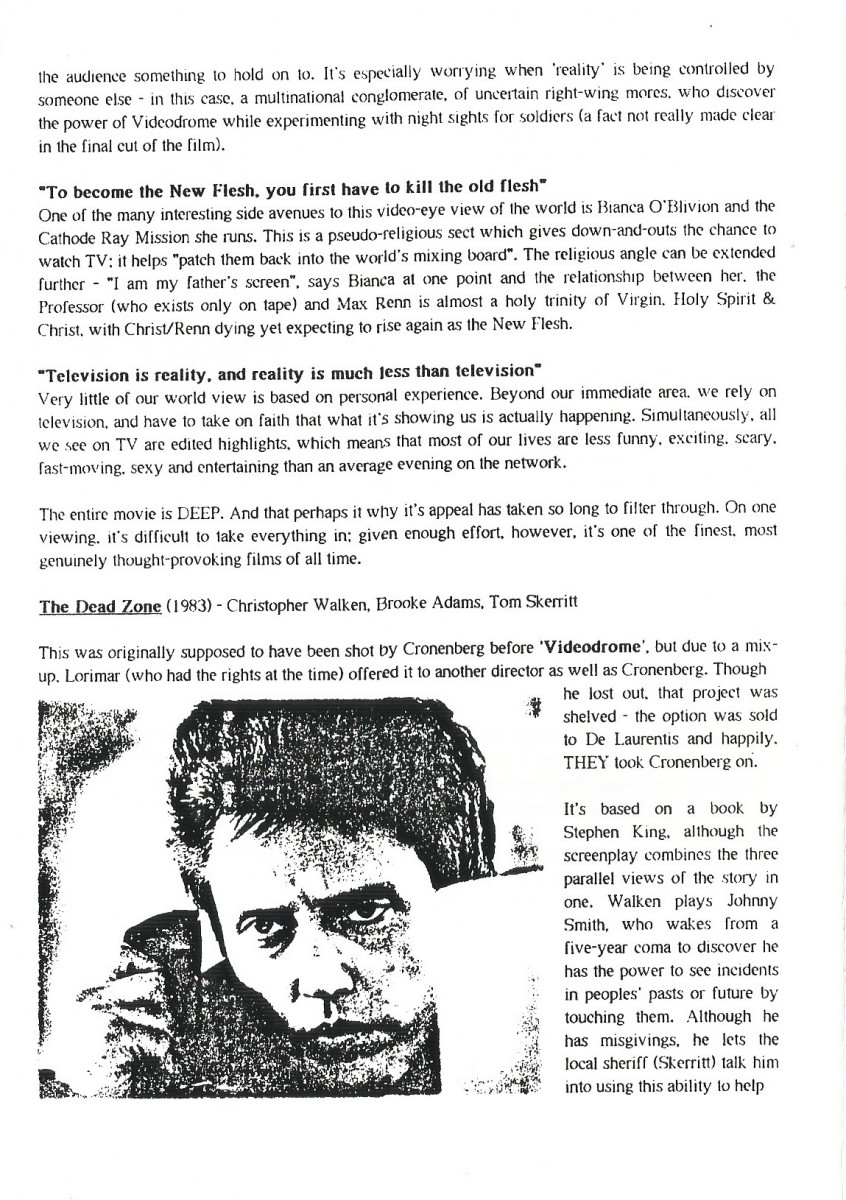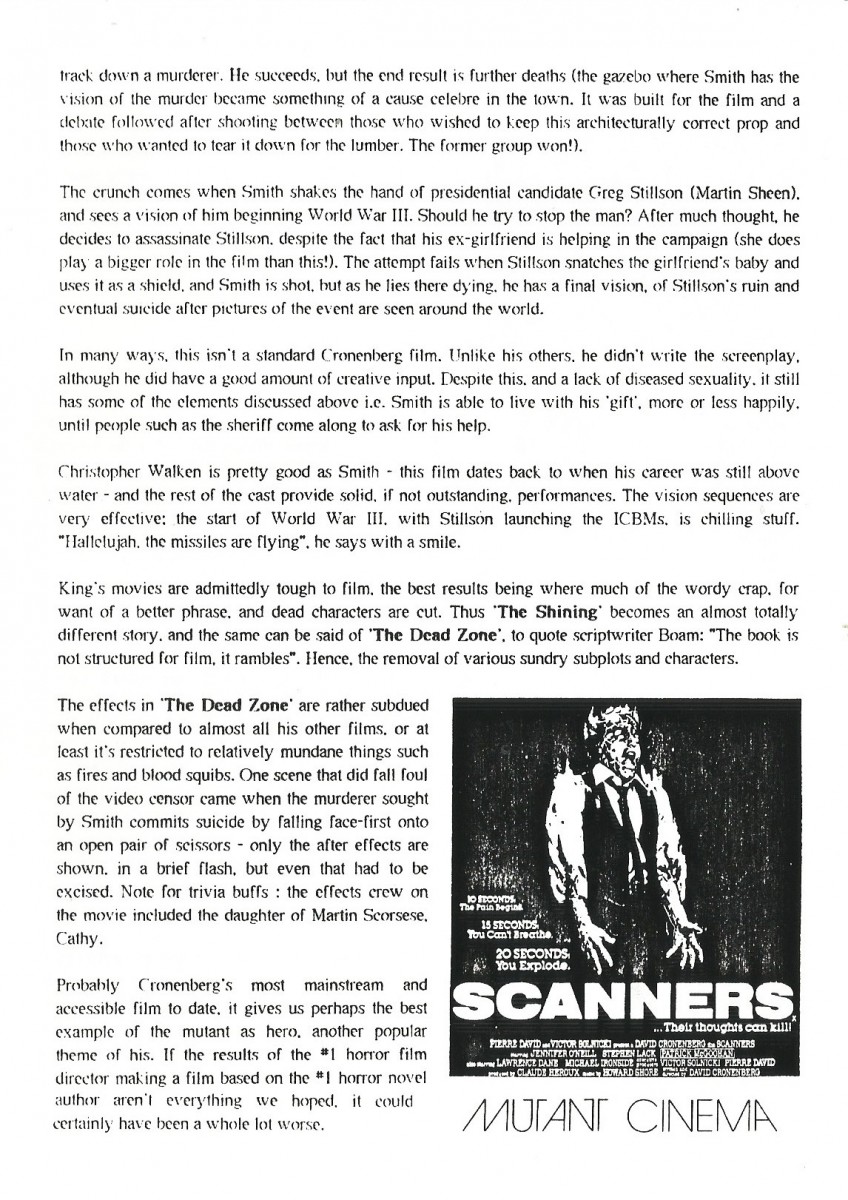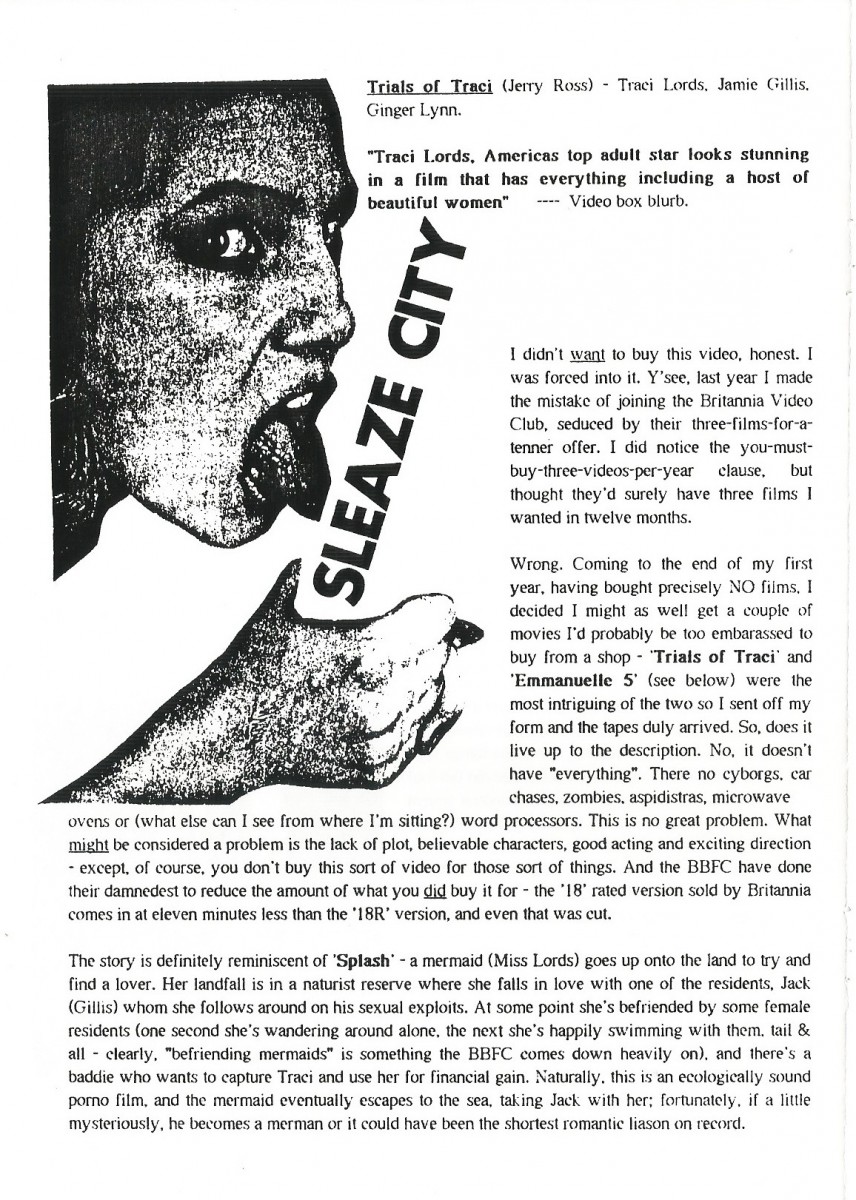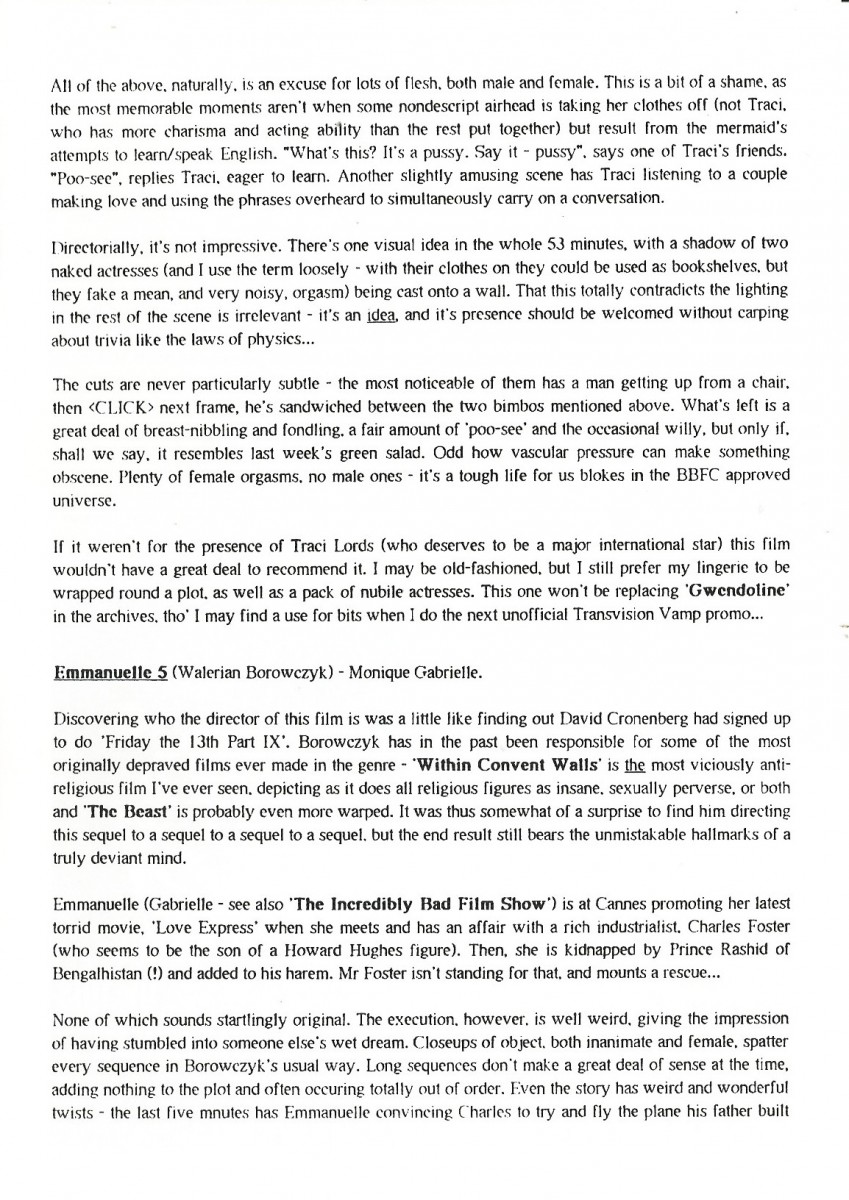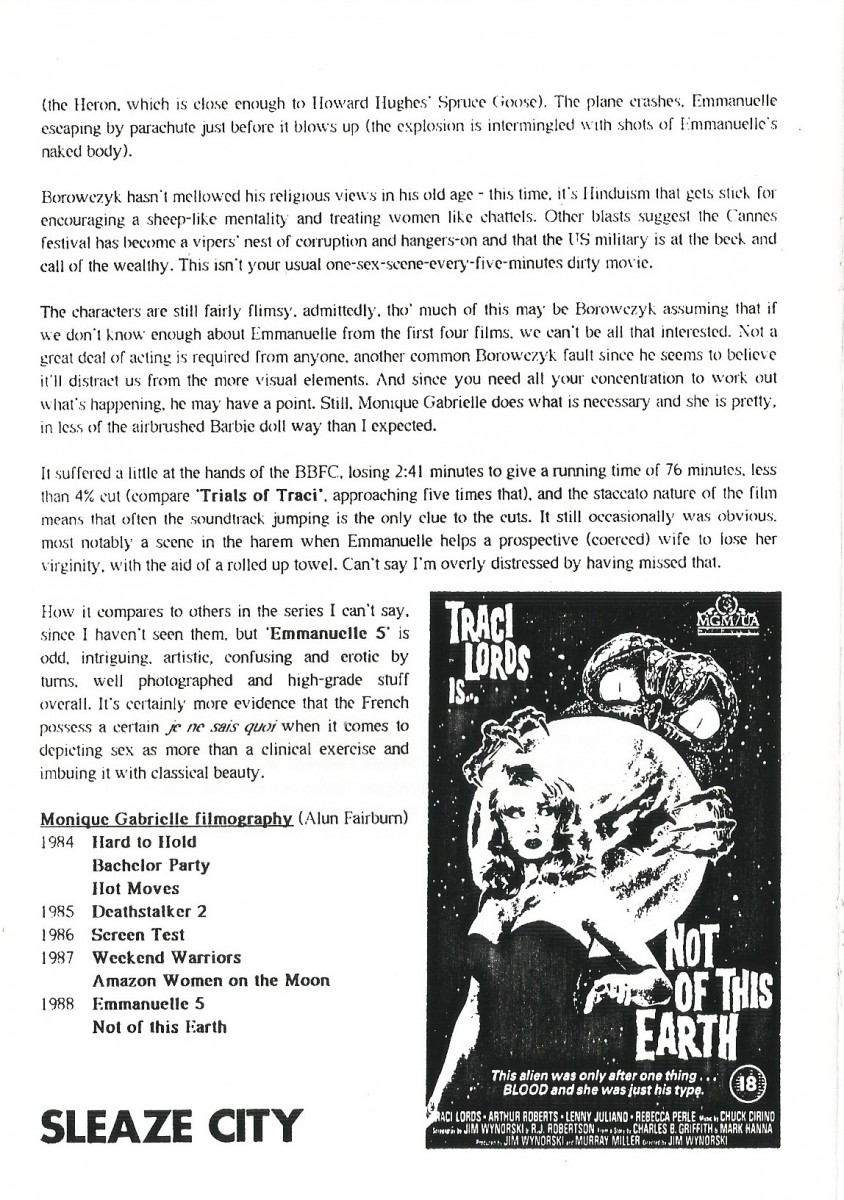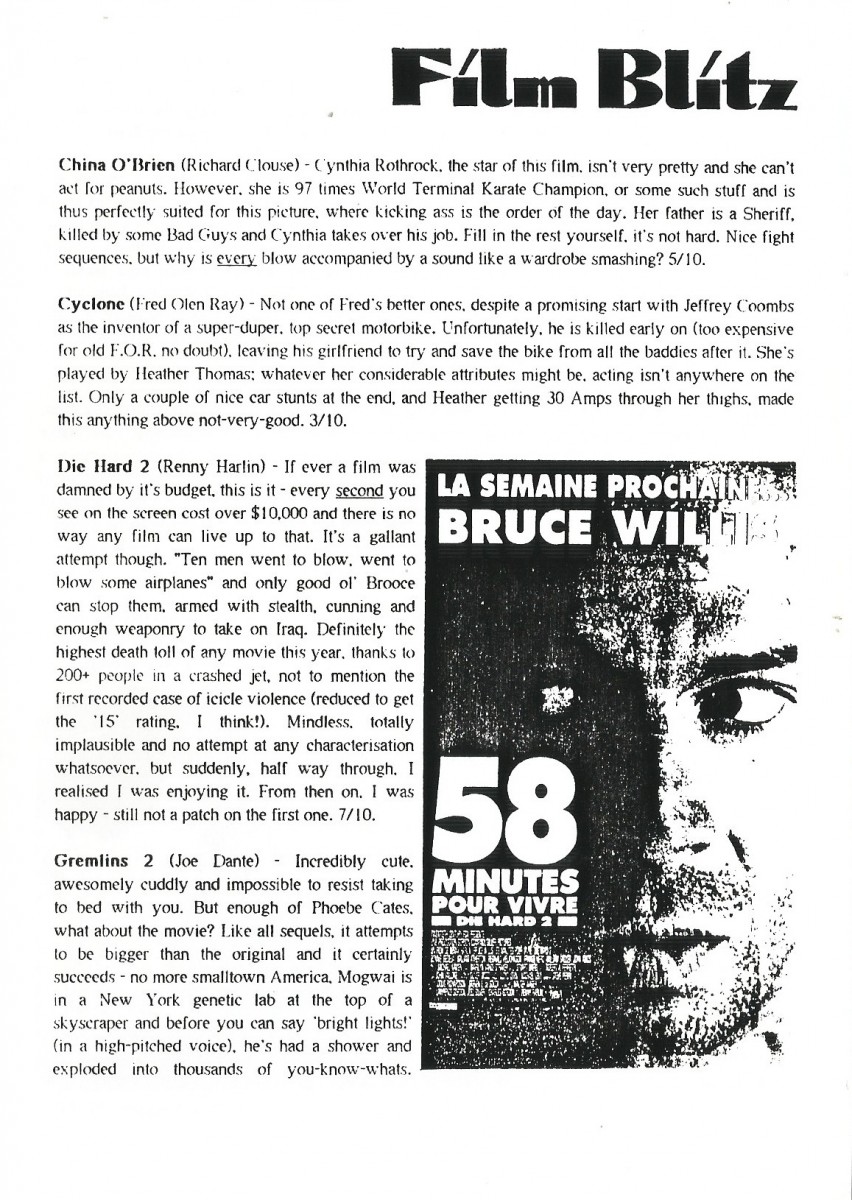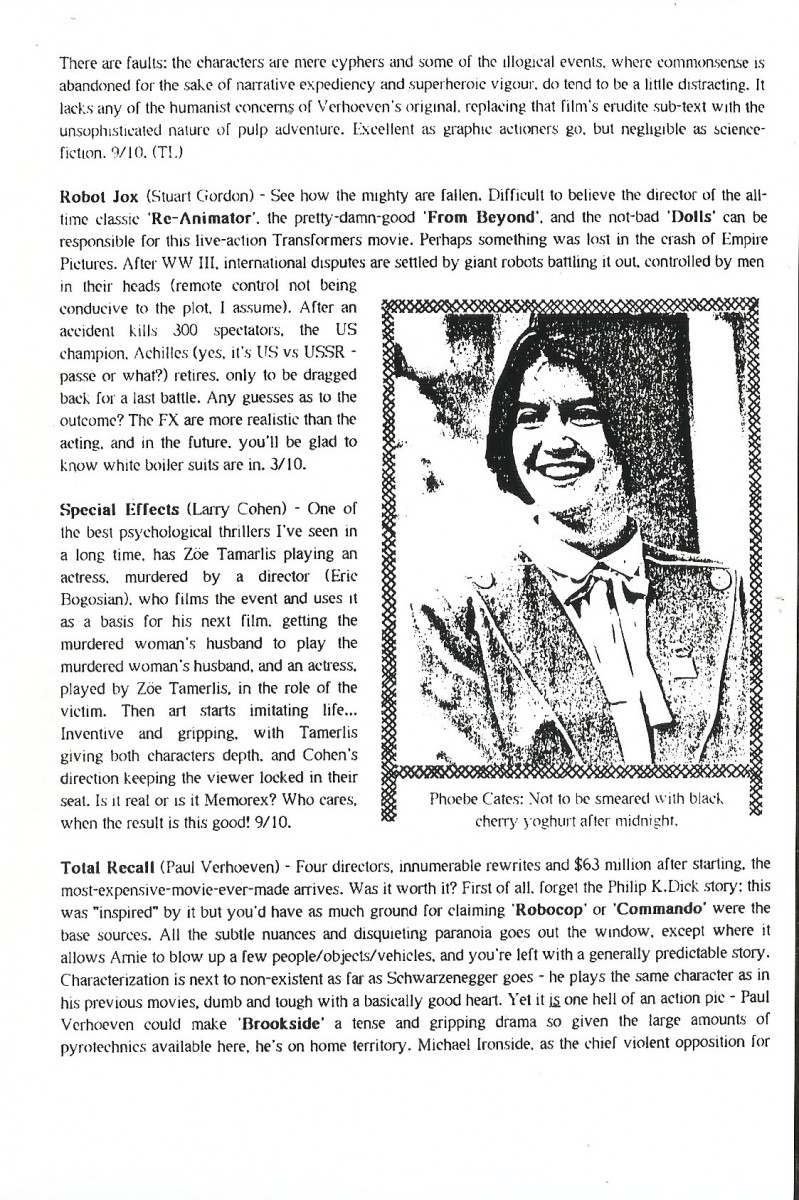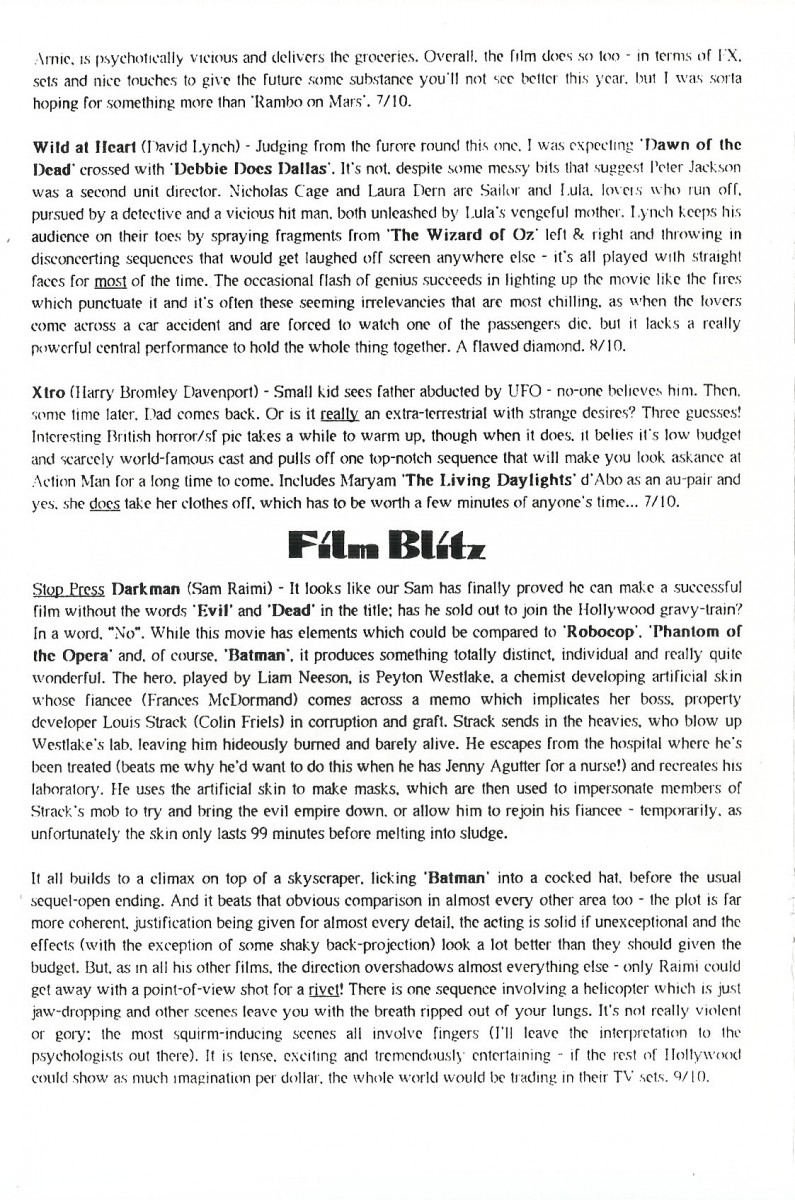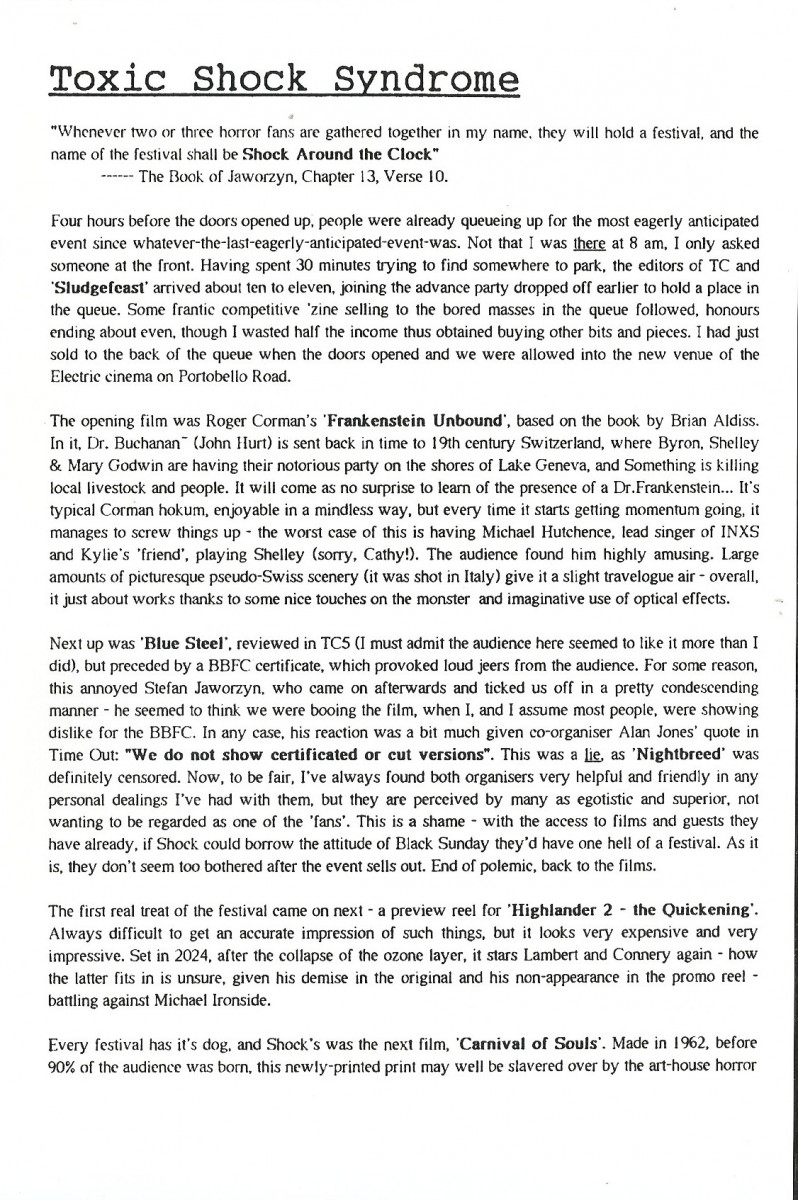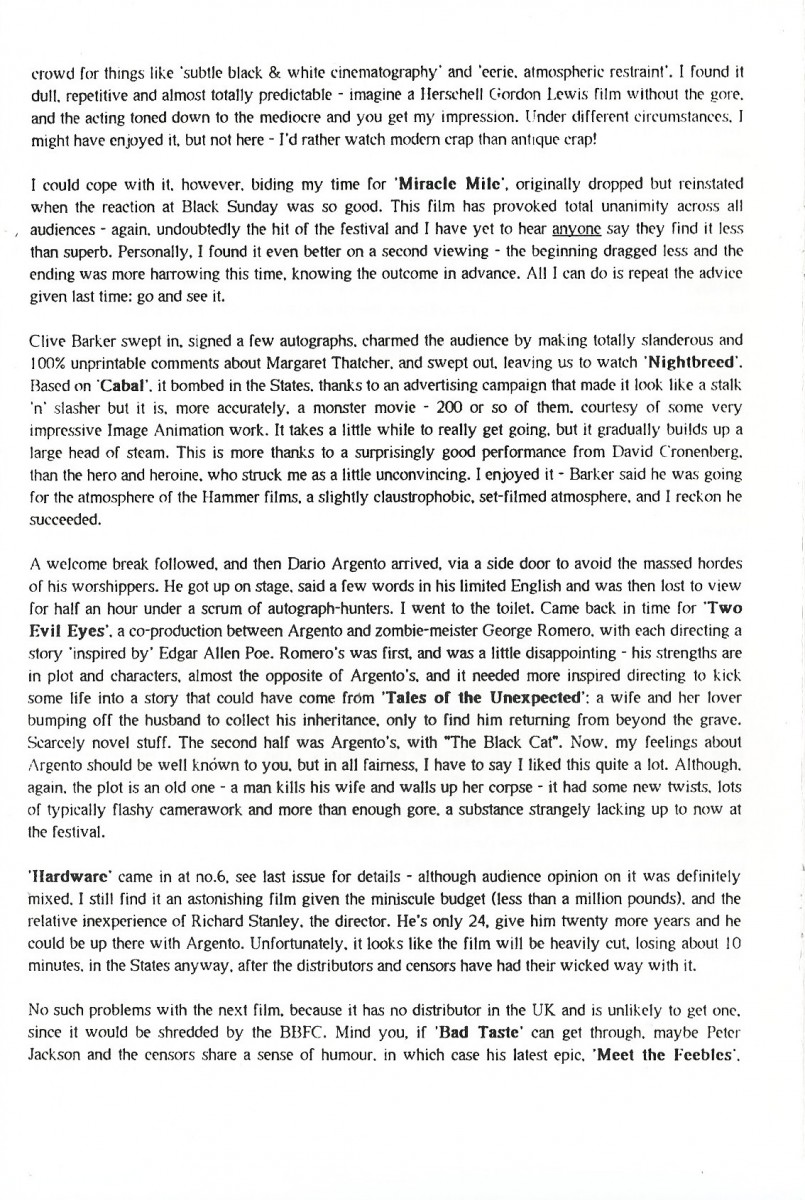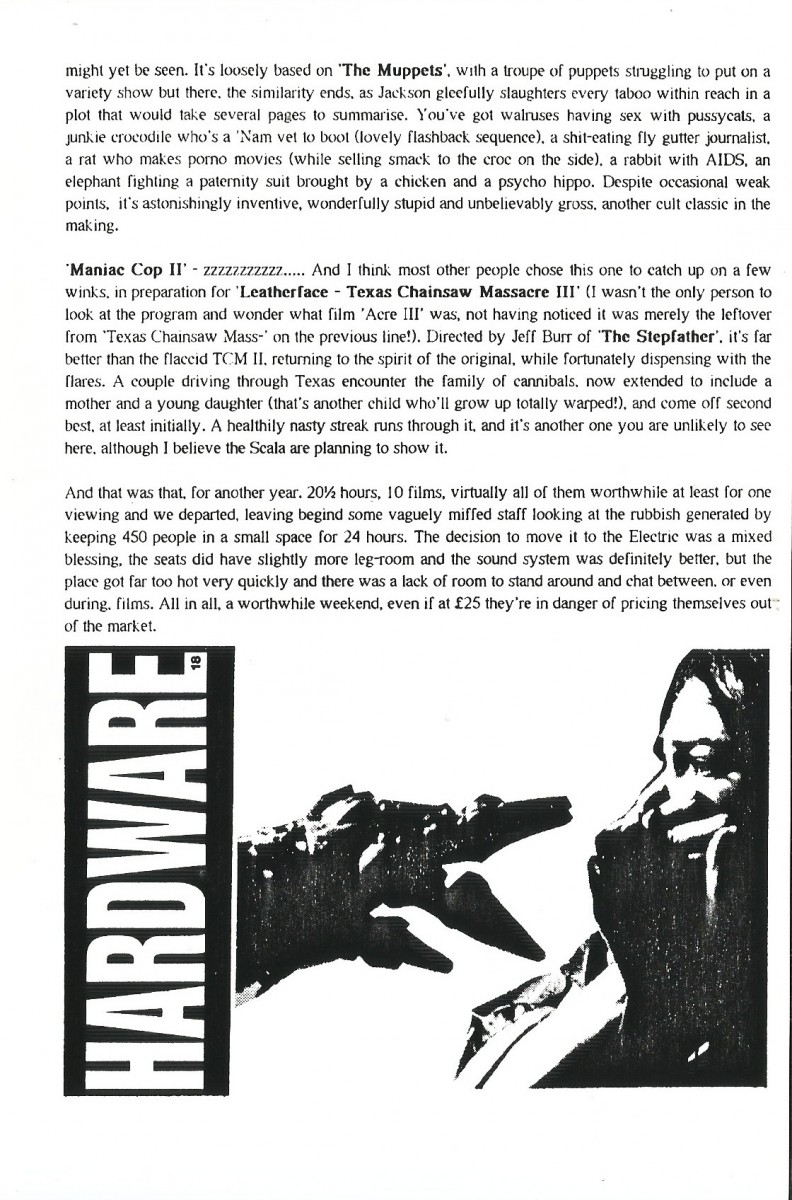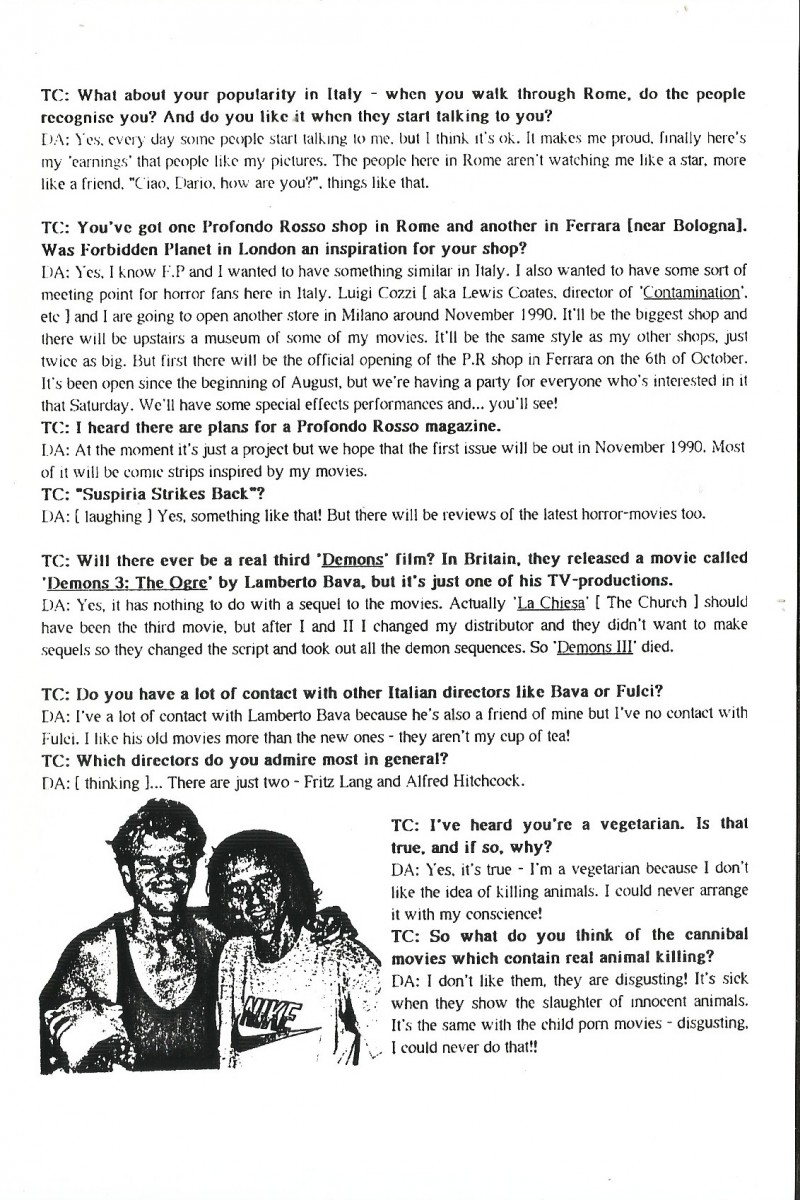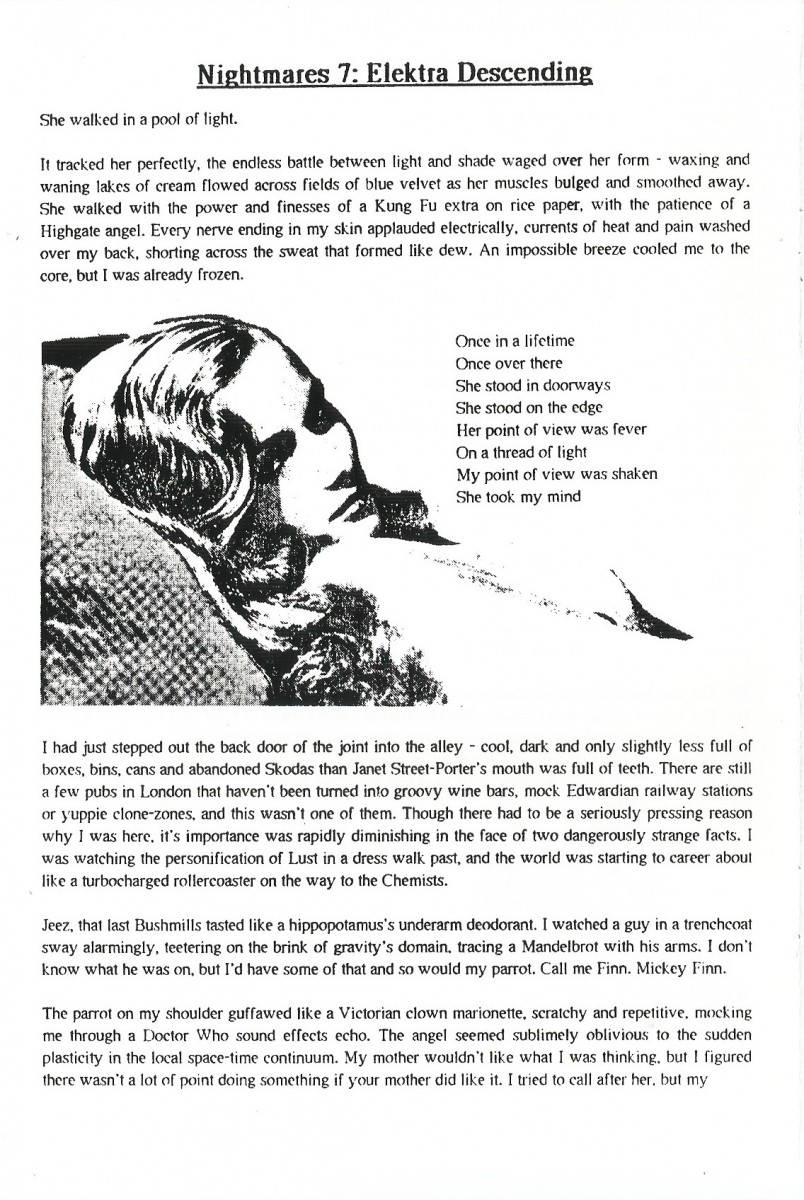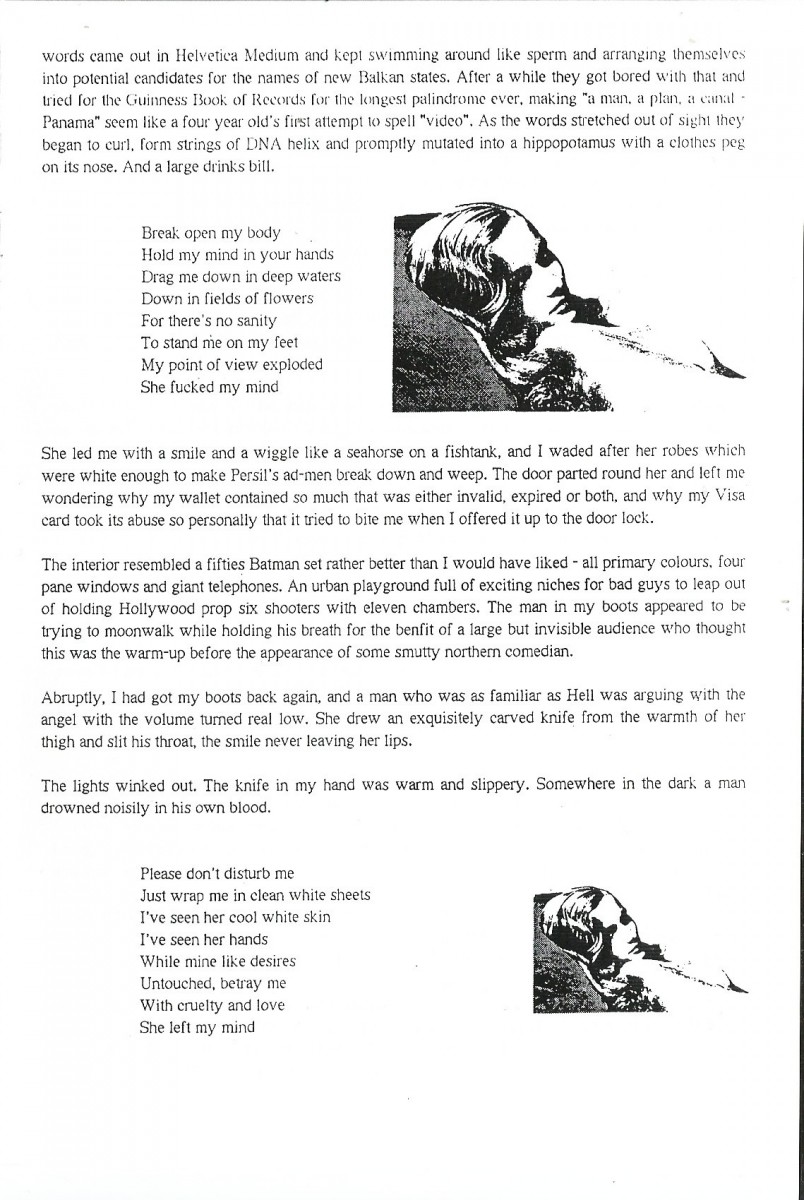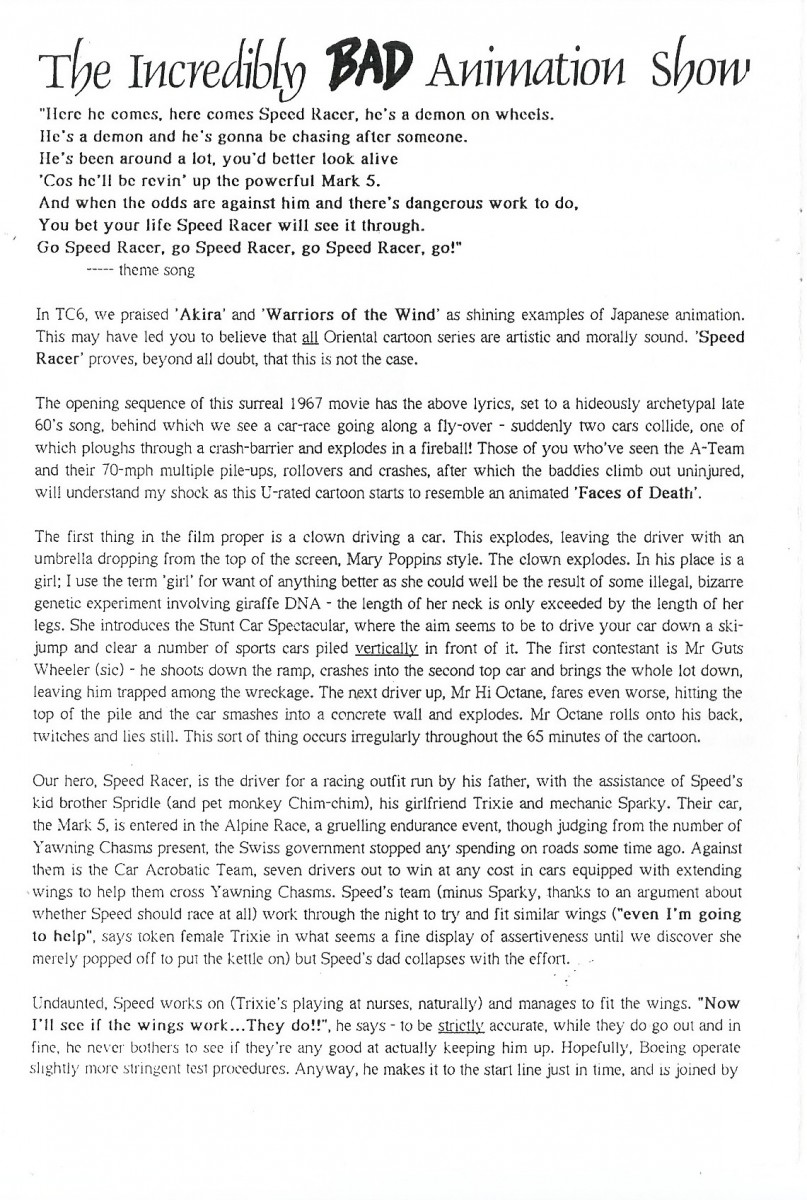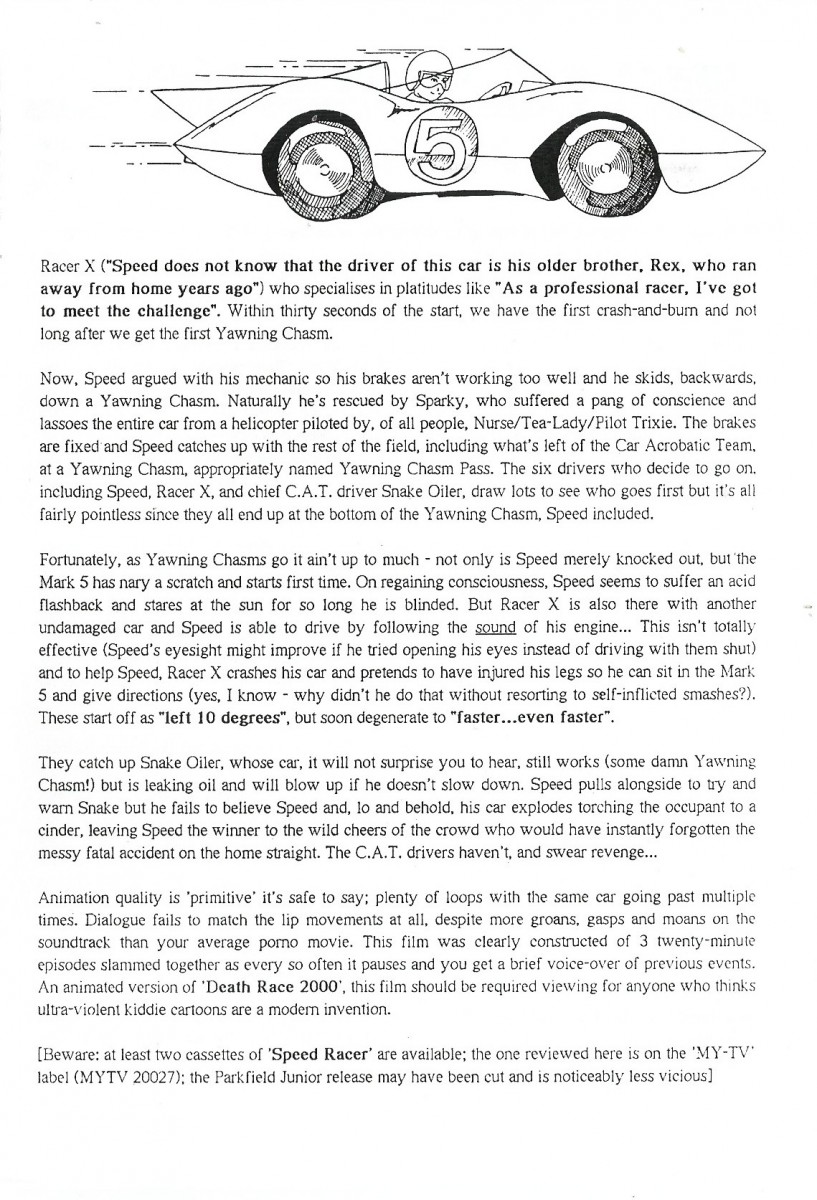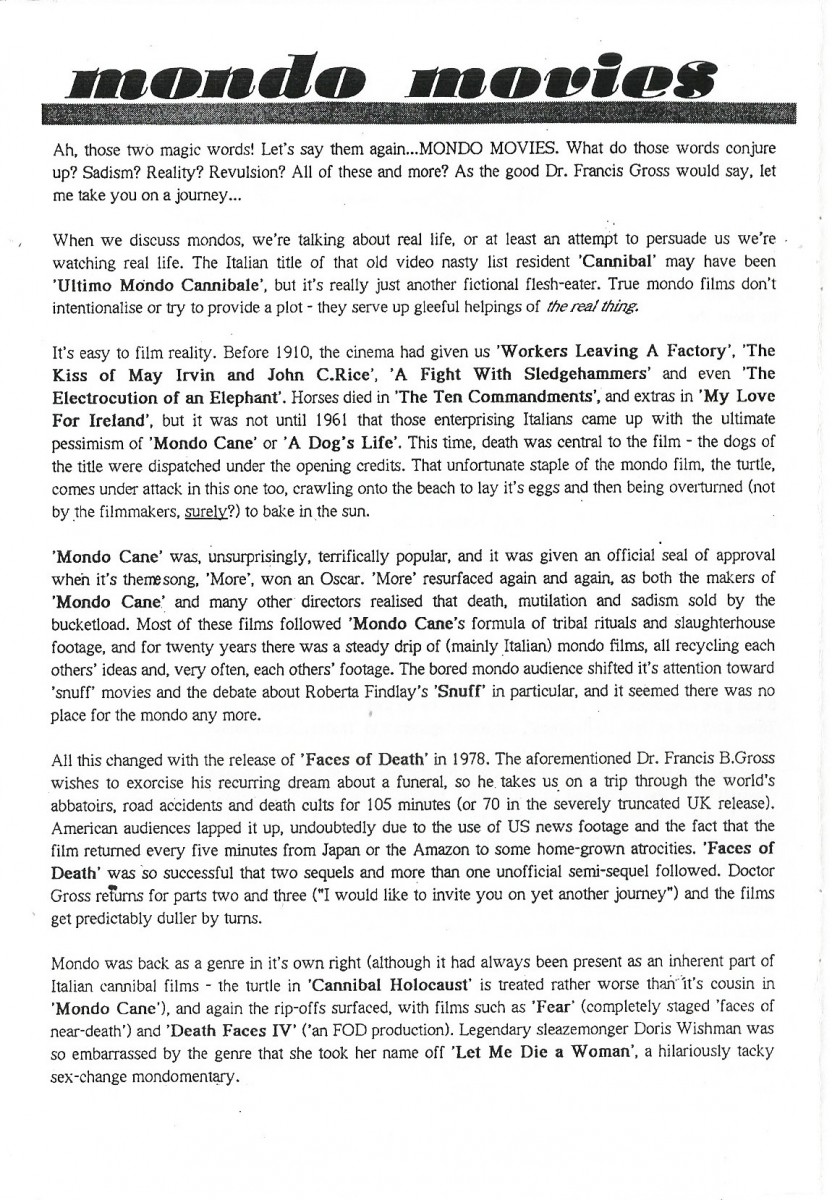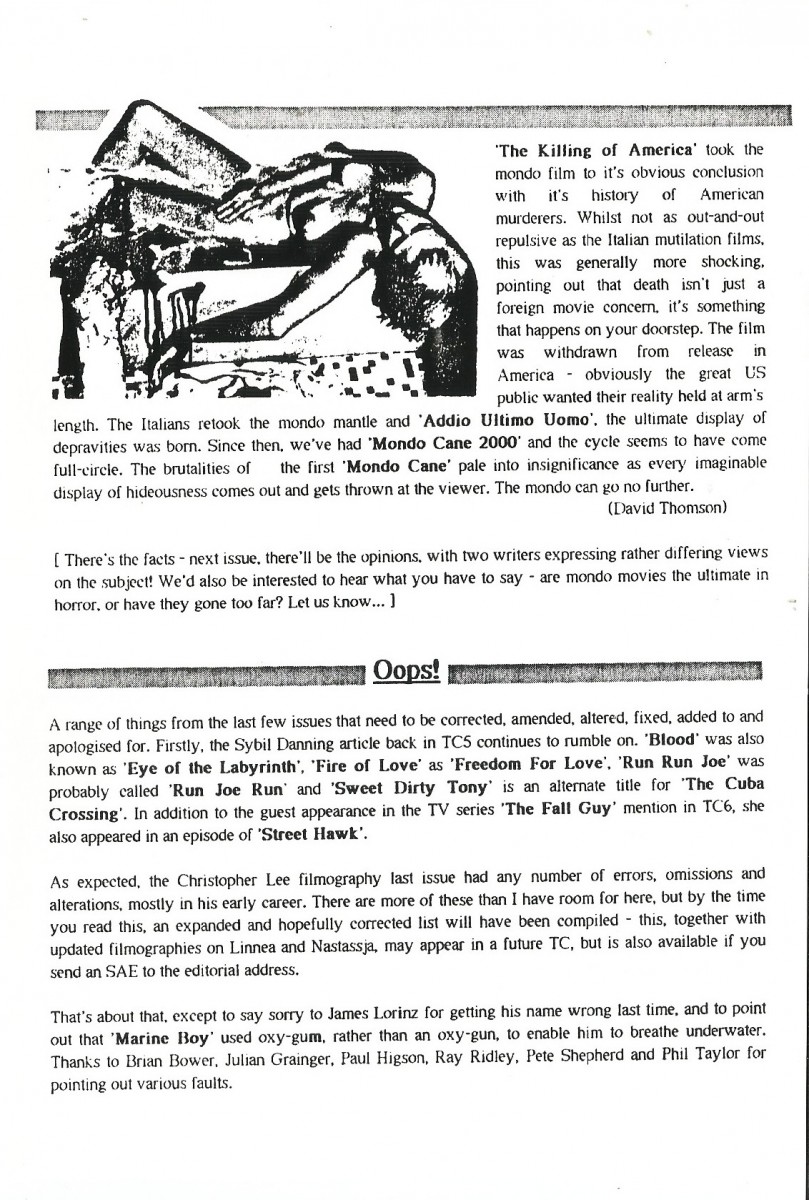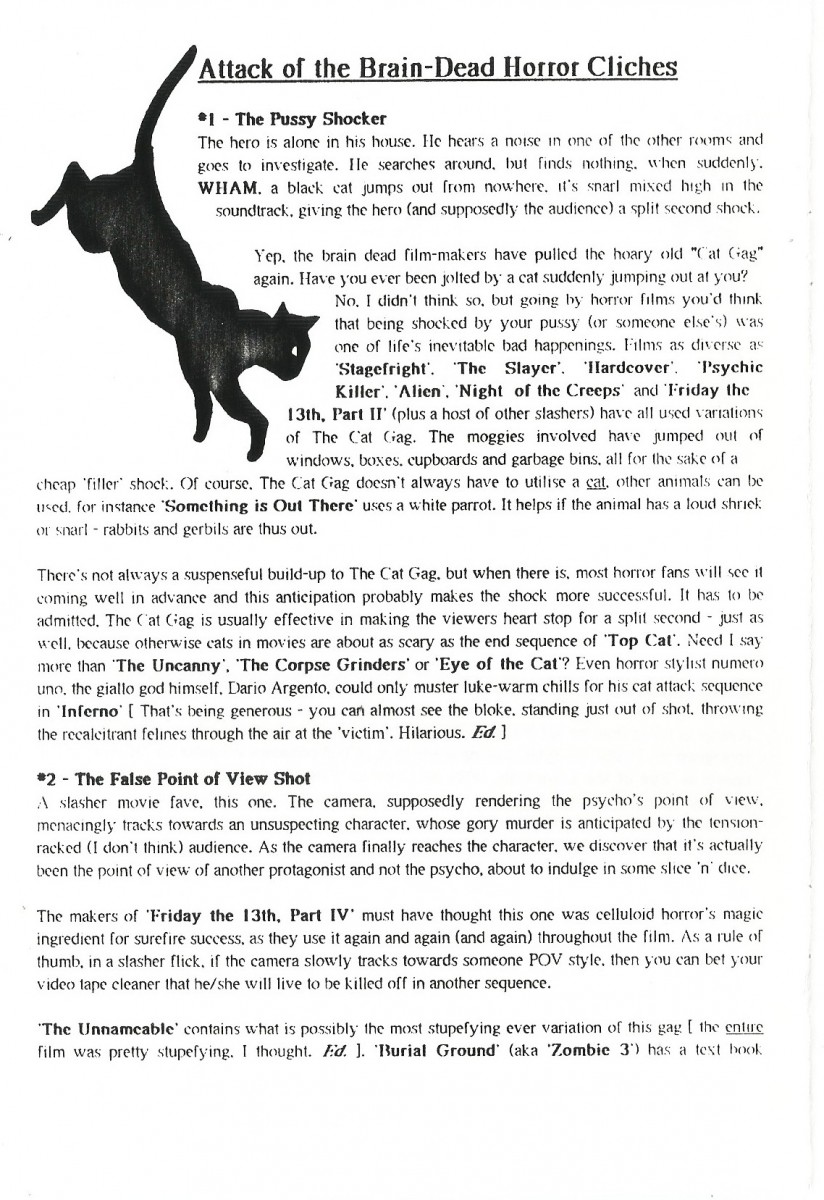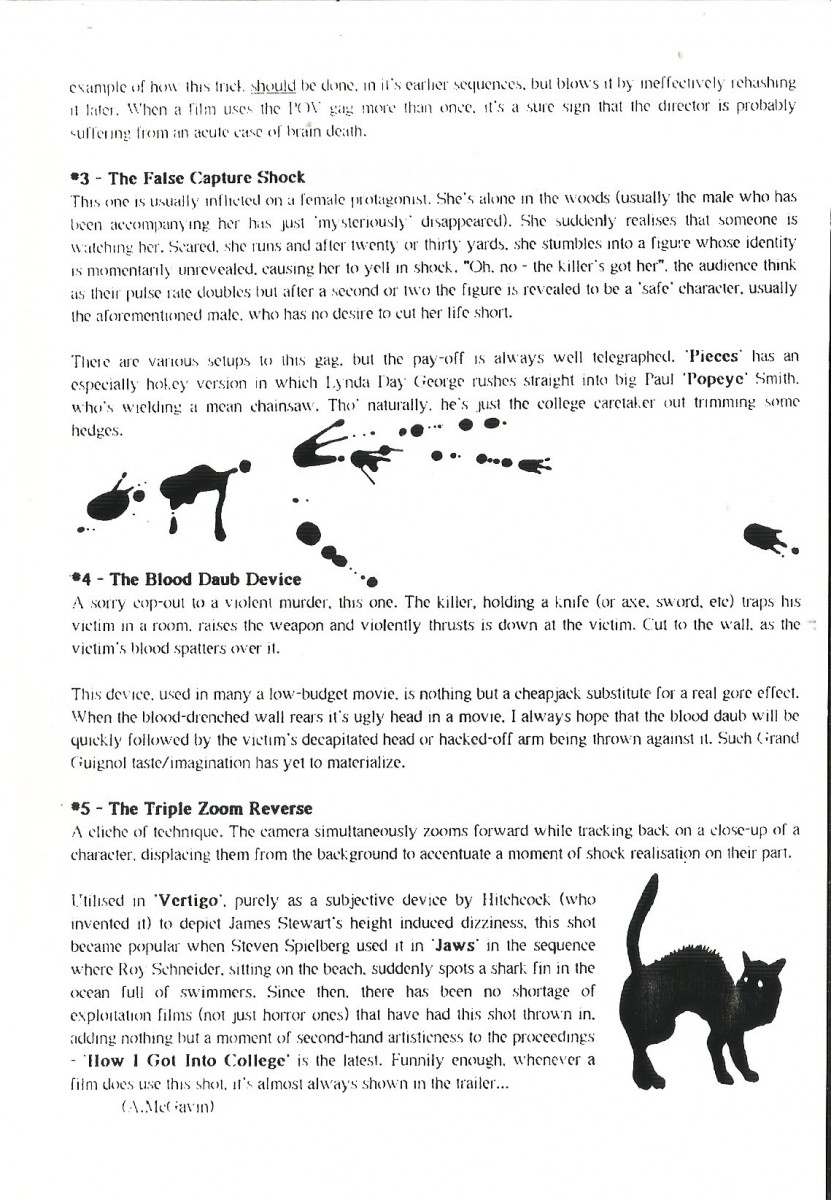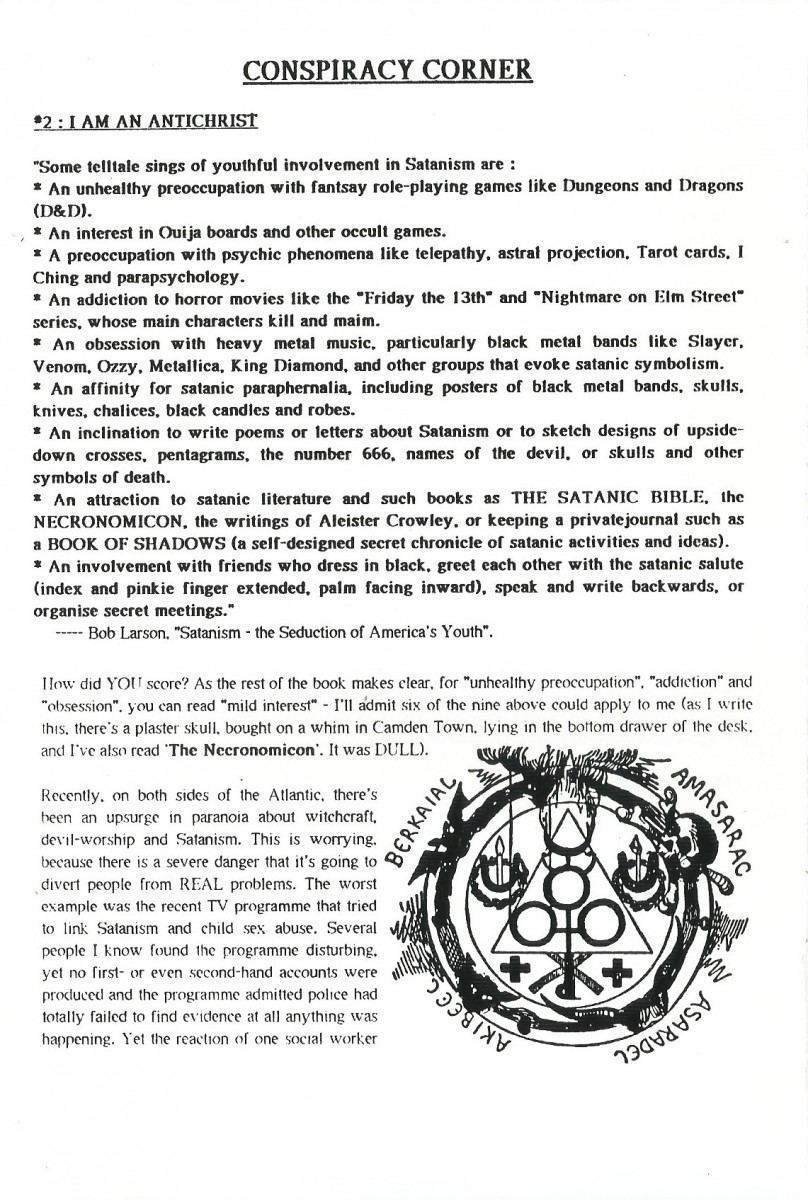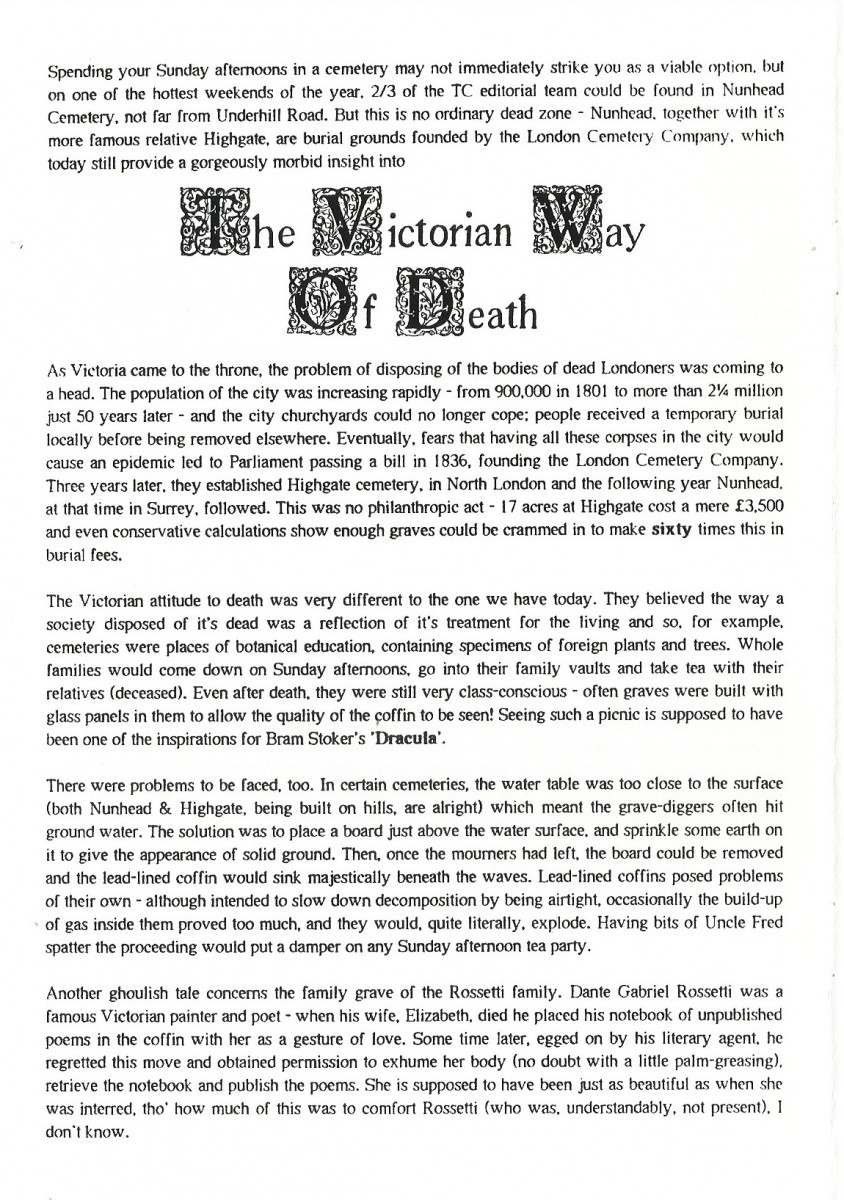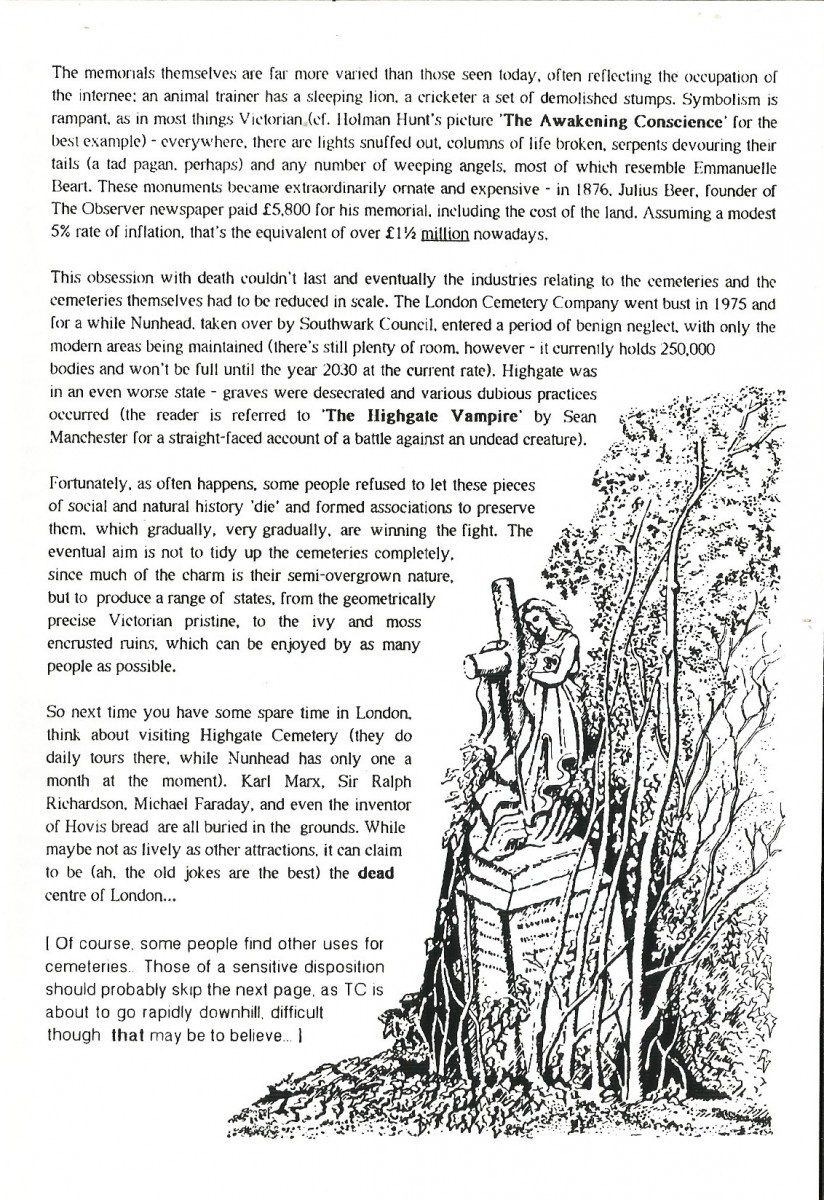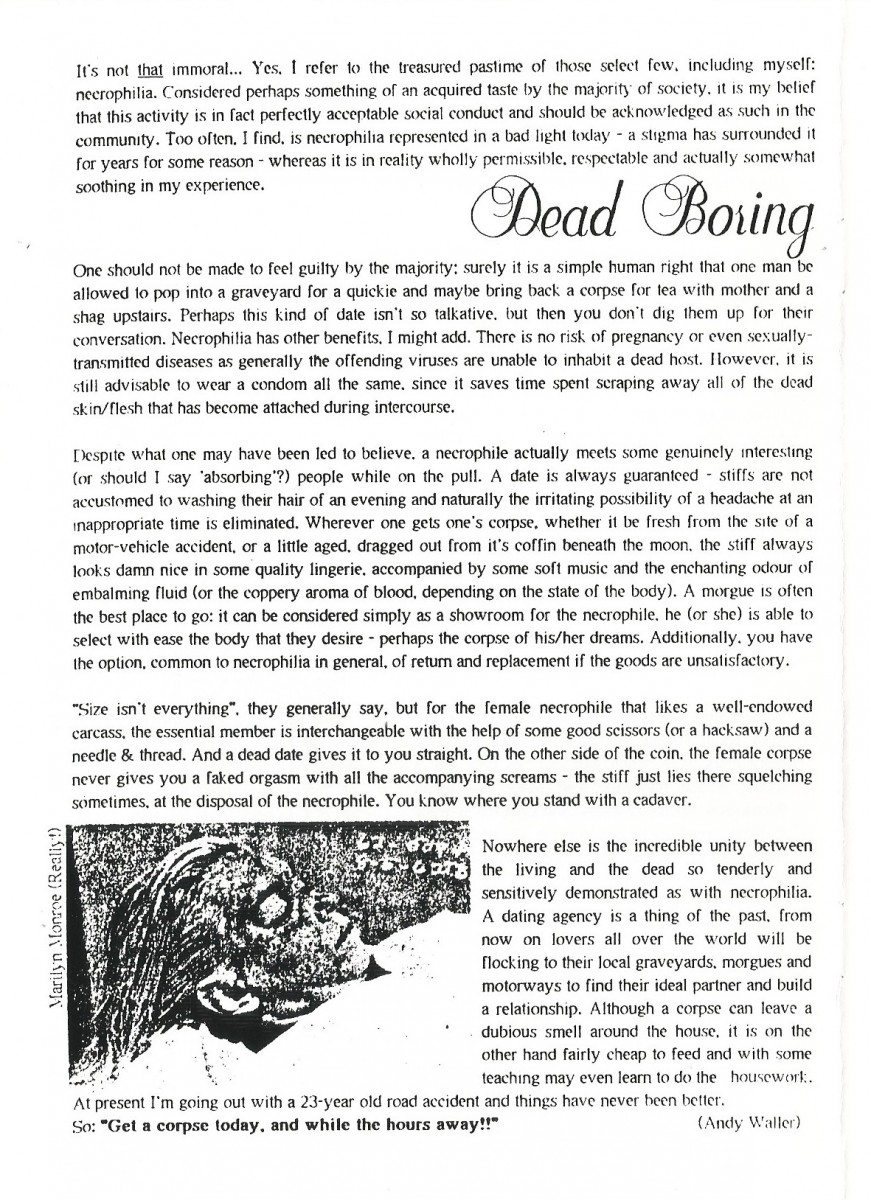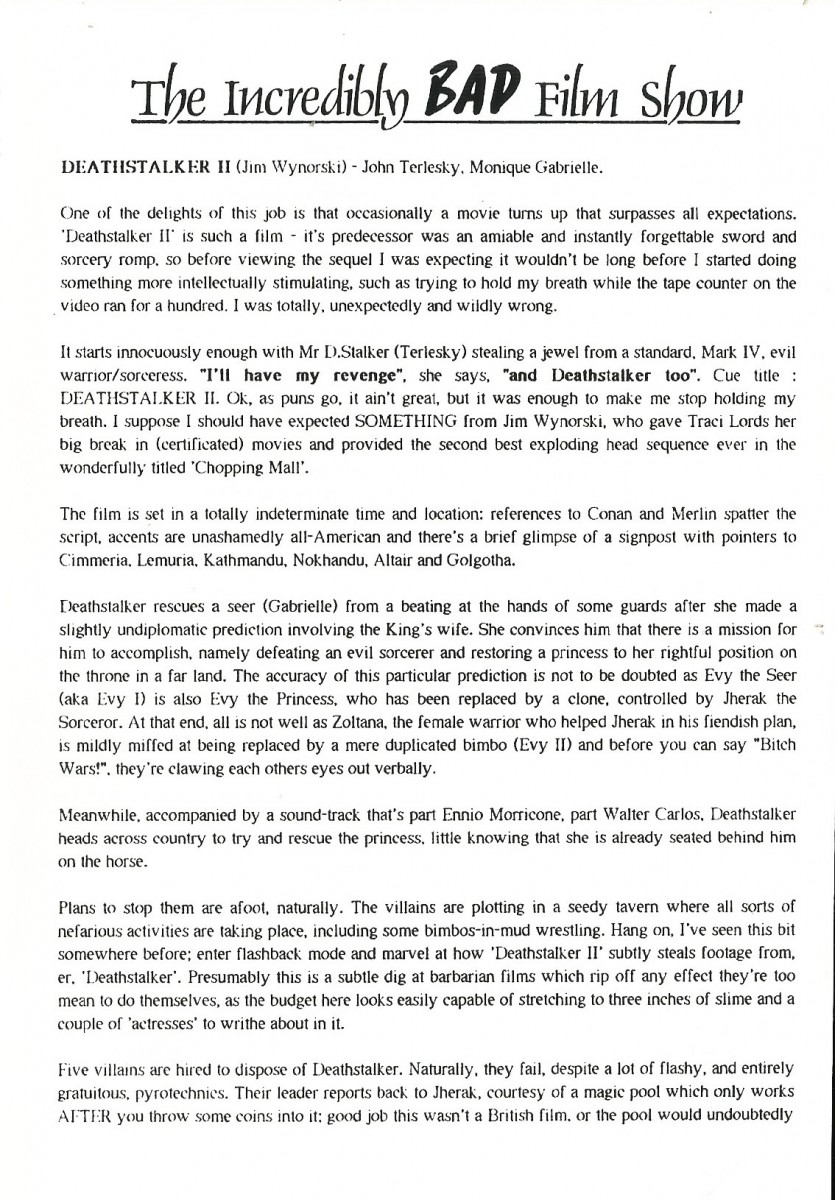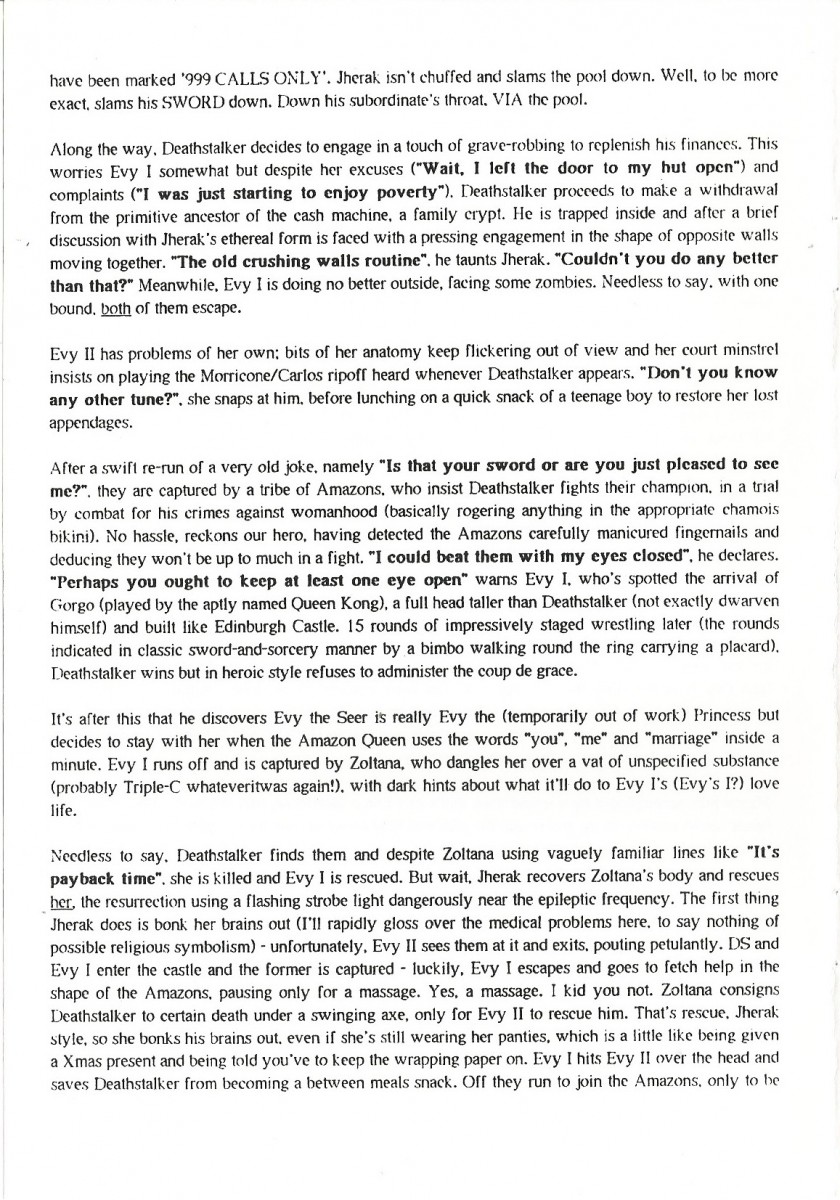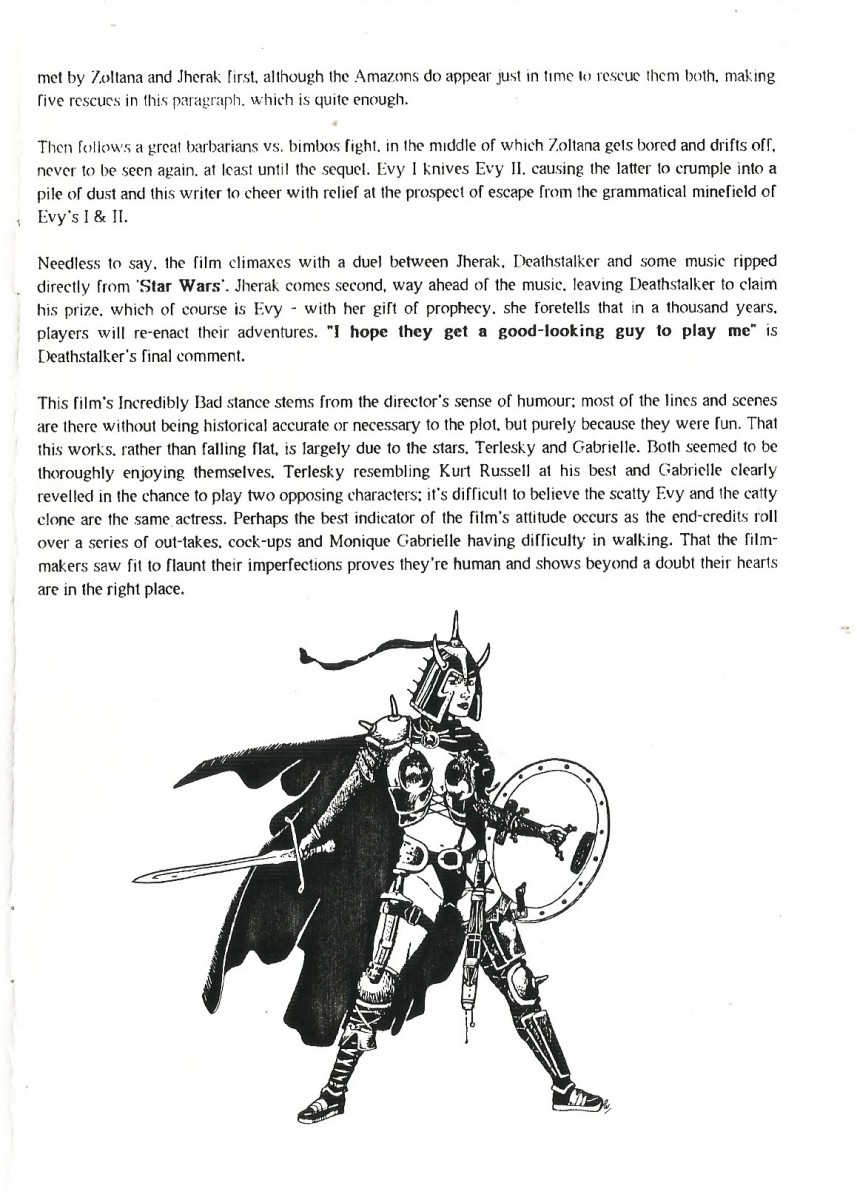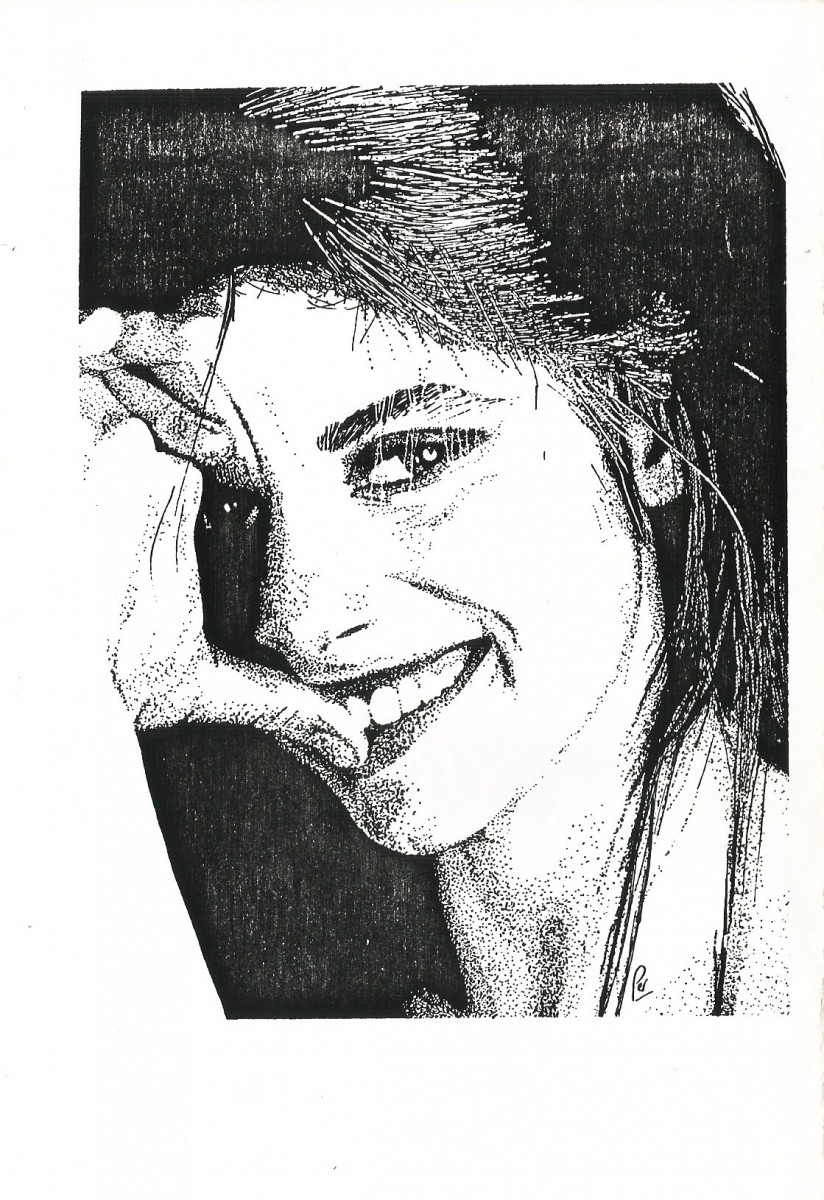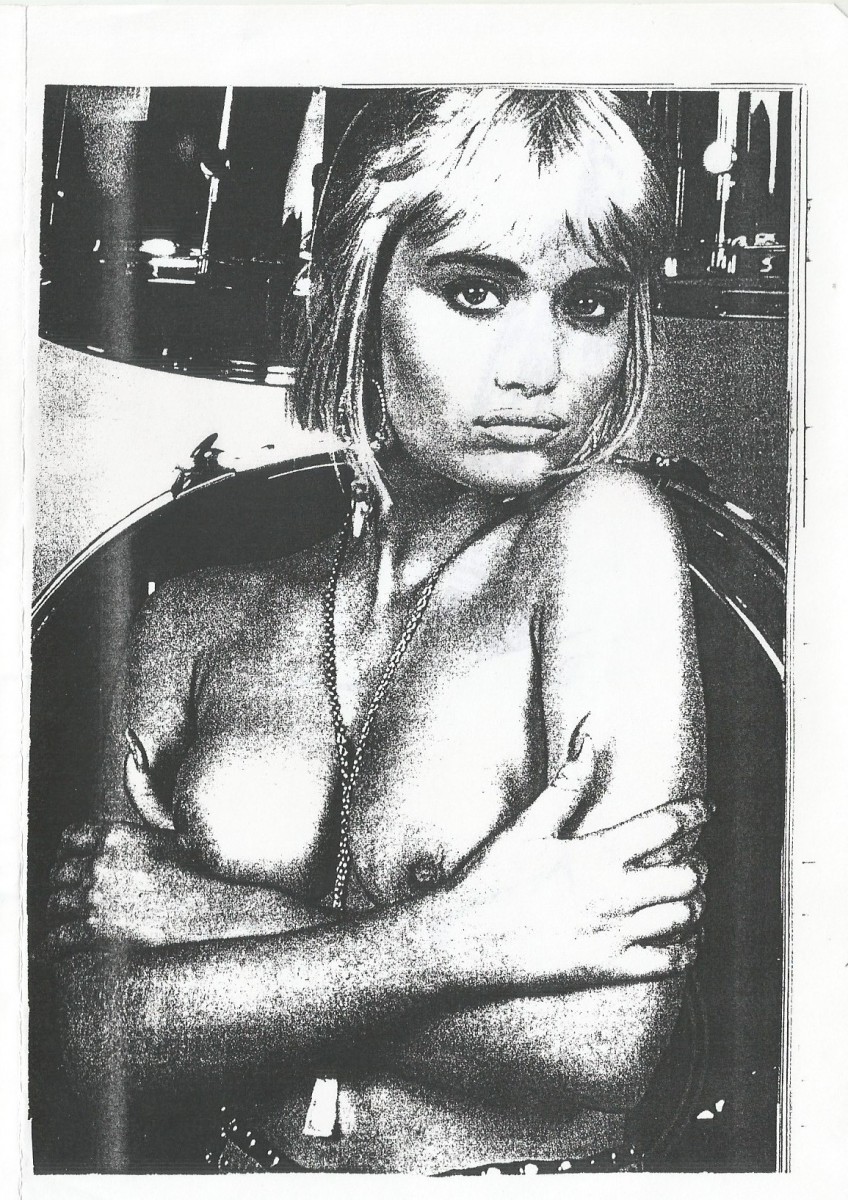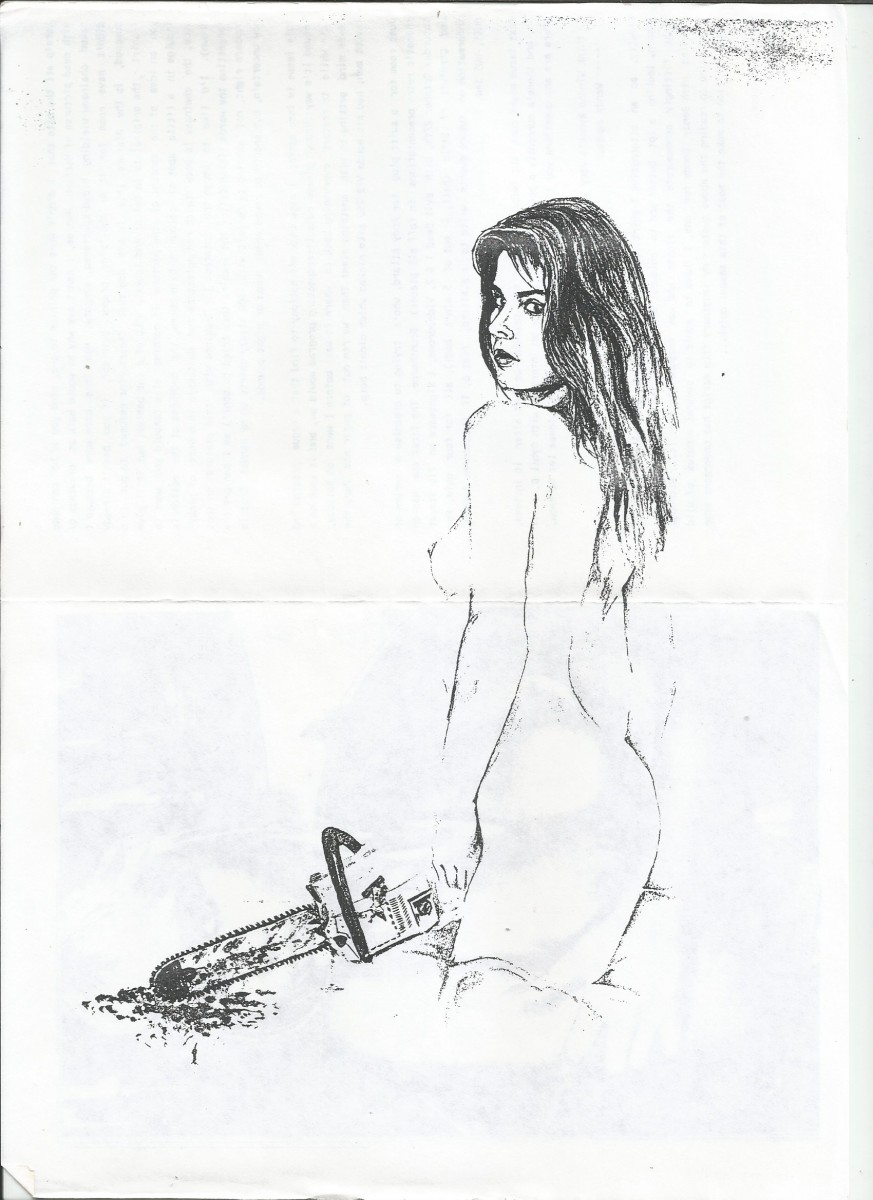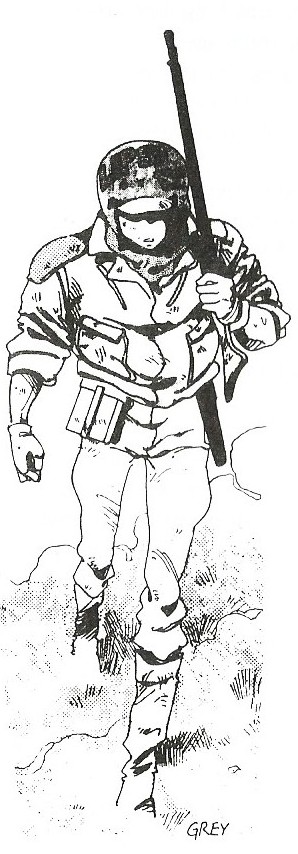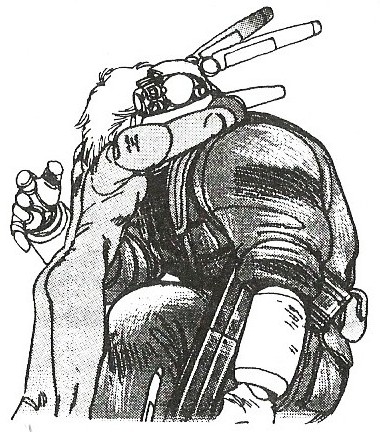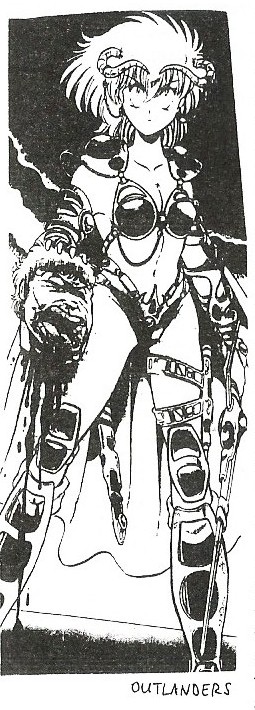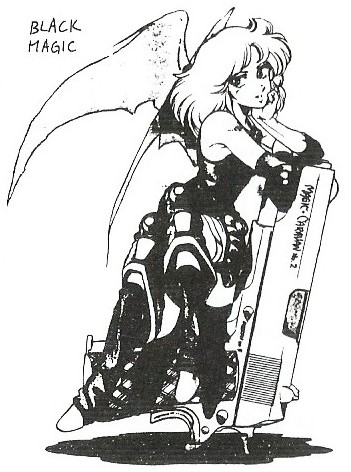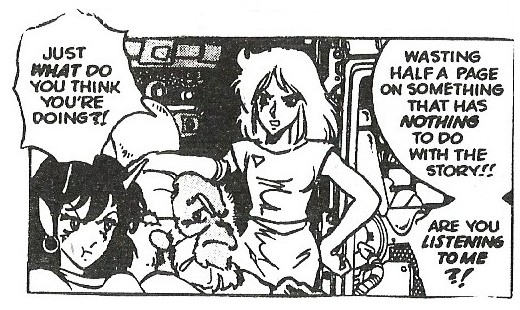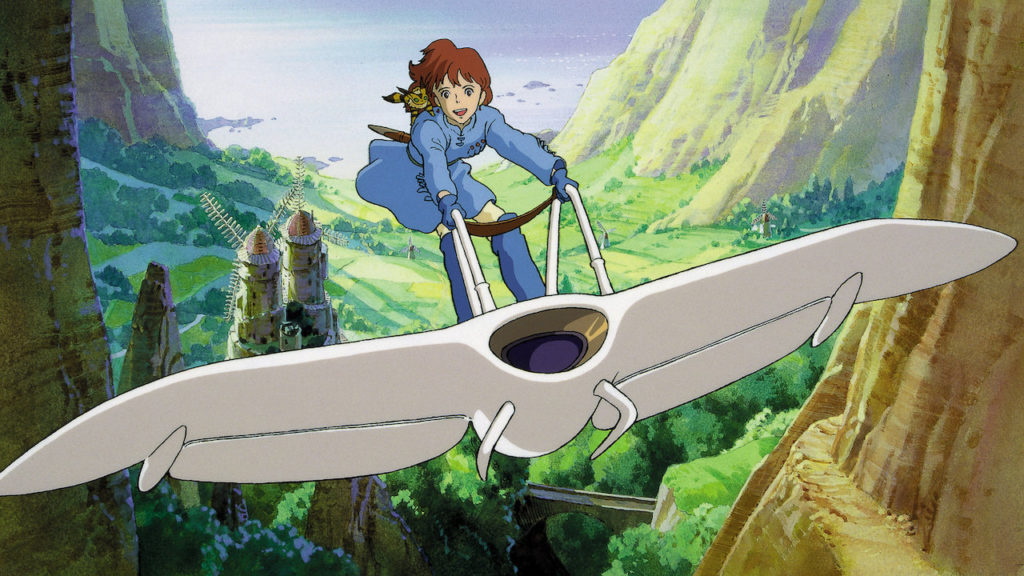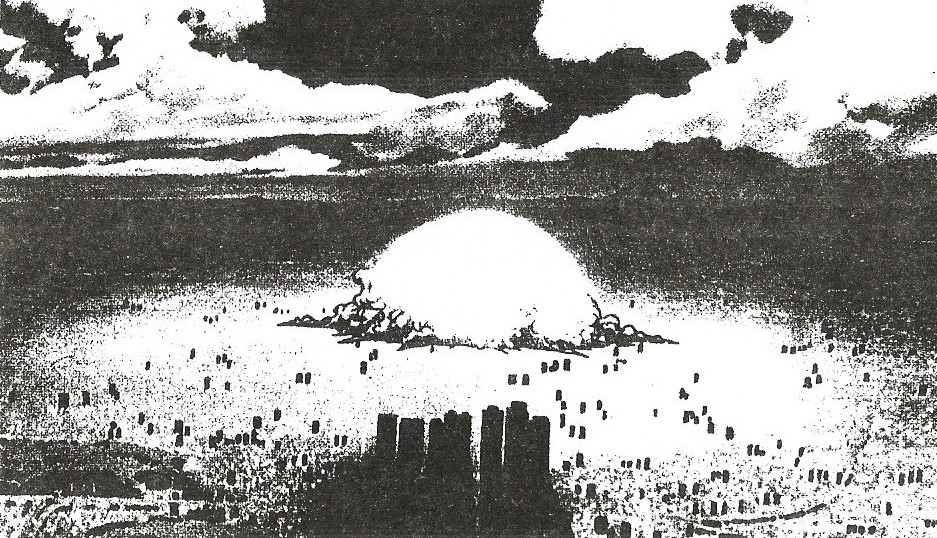Japanese comics {a.k.a. Manga) are currently a big hit over here and in the States. This is not surprising. In Japan, manga is the staple literary diet of people from all walks of life.. commuters read them on the way to work (no manga, no comment!); schoolkids read them like schoolkids everywhere. As a sign of the visual nature of Japanese society, the minimal reliance on the spoken word in manga can hardly be beaten. What manga do rely on is ART. The pictures in manga show an attention to detail rarely found in the DC & Marvel mainstream — background details & cityscapes look like technical plans or architects impressions; machines are believable (even when they are futuristic and bear no resemblance to modern day technology) . The major “drawback” to be found is the Japanese approach to drawing people — eyes are always large for the good guys; bad guys look mean; women are short with big t*ts and good legs — but this is purely a question of style, and is purely based on the limited amount of manga that actually reaches our shores (anyway, who’s complaining when it’s good style!!).
To some extent, it is obvious that the average manga that gets published in English will be of higher quality than the average DC/Marvel comic – only the best of the manga get into English in the first place!! However, manga caters for a wide variety of tastes and grabbing a random copy of something off a shelf will Lt allow you to discover whether you like manga. Hopefully the following list will offer some hints as to what’s around (whether it’s being printed now, is back issues only or is available in posh collected graphic novels!).
Having said that mange are varied, there are some standard topics that have regularly raised their heads during our reading of them. These vary from Cyborgs & Psychic Powers to Totalitarian Governments & Secret Organizations, with Martial Arts, Conspiracies and Post Apocalypse Settings thrown in between.
Anyway, that’s more than enough waffle — time to get onto the serious business and let you know what there is {or has been!) out there. . .
Grey (Viz) – Yoshihisa Tagami
Grey is a trooper. He went from class F to C in thirteen operations. In nine of those, he was the sole survivor – now they call him “Grey Death”. Soon he’ll reach class A, and then he’ll get to be a “citizen”. No more living in the slums with the “people” — a life of luxury under the caring eye of Toy, the supercomputer that looks after all the towns. Unfortunately for Grey, Toy has been thinking about the human race’s actions & can find only one logical conclusion — that the human race wants to wipe itself out. Cue renegades, dolls, hi-tech weapons, lo—tech weapons and a whole lot of fighting.
Nice art, with good use of use of zip-tone and not too much to get in the way of the action. Grey was a nine issue series that ended about a year ago, however, it has since been reissued as a pair of graphic novels.
Dominion (firzlipse/Studio Proteus) – Masamune Shirow
A six issue mini-series from Eclipse. It’s now on issue 5, but issue 6 is due out out soon. The story involves a genetically engineered fairy-like creature with the ability to breathe in polluted air & breathe out fresh air — a bit like a flying rain-forest I suppose. This creature escapes from it’s creators and is “adopted” by the local criminal genius (“Buaku”). The good–guys in this story are (for a change!) the police-force, specifically the tank police – a special task-force with assorted weird & wonderful tanks. Our heroine is Leona and her pride & joy is a tank called Bonaparte! So, you’ll find plenty of mayhem here as Leona and an ever-suffering male friend (who, naturally wants to be somewhat more than just a male friend!!) go out to get the evil crimelord and save the world from being over-run with pollution!! This is what Green politics should be like — no namby-pamby “save the rain-forests stuff”, but good hi-tech chaos!!
Bach (Viz) – Hirohito Araki
I bought the first three issues of this, and it was sorta fun. It’s a story about a cyborg who escapes from a secret government research lab with a couple of other genetically engineered freaks. However, it wasn’t anything above Xenon, so I stopped getting it. It wasn’t that it was worse than Xenon, just nothing new…
Cyber 7 (Eclipse/Studio Proteus)
Book 2 (Rockland) is now on issue 7 and shows no sign of ending (yet!). The Cyber 7 of the title are a group of little robots that can open inter-dimensional portals. At the centre of the dimensions is “The Crystal World”. ‘Ihe Princess of the Crystal World has fin trapped on Earth and (fortunately for the plot) has forgotten who she is. Using a special manuscript, she can summon the Cyber 7 to her aid as Kakuo (a robotic heavy who is trying to take over all the dimensions] tries to prevent her from regaining her rightful place by suitably foul means. With a rabbit-headed guy who comes out with witty lines like dubbing cigarettes as “perfect for a low-grade suicide fantasy like mine”, this is “cuter” than a lot of manga — not so much out-and-out violence, but a lot more story—telling.
Mai the Psychic Girl (Viz) – Kazuya Kodo/Ryoichi Ikegami
Mai, is a teenage girl possessing telekinetic powers inherited from her mother. A powerful & secretive group called the Wisdom Alliance, who have been controlling the world politically for many years, have noticed the potential of Mai & have decided to capture her and use her to further their plans for a ‘Master Raoe’. To this end, they hire a private Japanese intelligence network – the Kaieda agency – to kidnap Mai. The deal is broken when the head of the Kaieda agency discovers Mai‘s incredible powers, and the gloves come off with other children controlled by the Wisdom Alliance being sent out to bring in Mai – dead or alive.
This comic is perfect evidence for the visual nature of Japanese comics — with sometimes only one page in four having any text on it at all. Simple acts (like a character falling] are stretched out over multiple pages, so the story can be scanned rapidly without loss of meaning (and a good thing too, as the whole story is not far off 1000 pages long) giving something very close to a cinematic experience!!
Appleseed (Eclipse/Studio Proteus) – Masamune Shirow (again!)
Well, the first three ‘books’ have now been published & it’s still well worth looking at. Book four is due out about when you’re reading this, and book five is currently coming coming out in Japan. If you’re interested in hunting out issues, book 1 has been reprinted as a graphic novel.
Written & drawn by Masamune Shirow, it’s about Deunan, an operative with ESWAT (Extra Special Weapons & Tactics??) , and Briareos, her bioroid lover/partner/mentor. With supercomputers, landmates & much politicking (not, I must emphasize by our heroic duo!) this is hi-tech action at its finest. The artwork shows a pleasant mix of extremely good realistic artwork, punctuated with silly cartoon characters – generally when Deunan or one of the other humanoid members of the cast freaks out (through anger or laughter!) . There’s the usual Japanese quantities of nudity & violence (i.e. copious!!!) and the characters should keep you entertained even if the story ain’t too mind-stretching.
Xenon (Viz)
Xenon is a cyborg killing machine. The Bloody Sea made Xenon from a kidnapped college student {Asuka Kano). When a plane carrying him crashed into the sea, Xenon escaped & got back to Tokyo. Asuka wanted to restore some of his previous life, but the Bloody Sea wanted him back. He disagreed – violently. Other cyborg style soldiers were sent out to try and destroy Xenon… cue zap-pow action. There’s a spot of romance chucked in, but that doesn’t spoil the violence! Look for it in bargain boxes, and try it for size – if it ain’t to your taste, then at least it wont have cost much!!
Dirty Pair (Eclipse/Studio Proteus) – Toren Smith/Adam Warren from Haruka Takachiho
Just a brief mention, as this isn’t real mange – it’s based on some genuine manga/anime characters, but is written by Yanks. I started getting this a while back, when I spotted issue 1 with a pair of ‘Bunny Girls‘ on the cover, eventually issue 2 came out, & I got issue 5 at the start of April. Unfortunately, issues 3 & 4 slipped my grasp. This is particularly unfortunate as it was only a five issue series!!! Book One of this has been reprinted as a single volume (entitled ‘Biohazards’) and you may luck out & find a copy of it lying around somewhere.
The Dirty Pair are special agents for an international defence organization, and are, for cuteness’s sake, female. They’re not humans, they’re genetically engineered creatures who just happen to look & act human! They themselves prefer to think of themselves as the ‘Lovely Pair‘, but a spot of bad publicity has made the press label them as ‘Dirty’. They’re efficient, ruthless & always get a job done… however, they do have a slight habit of causing damage to property & people in the process!!!
Nausicaa an the Valley of the Wind (Eclipse/Studio Proteus)
The style can be summed up in one “motion”. There’s barely a frame without some notion, and the horizon rarely stays in the same place for long. See the animations section, as “Warriors of the Wind”, for more details about this one.
Akira (DC) – Katsuhiro Otomo
The hardest and most mature comic art yet from Japan. Otomo claims to have been inspired by new wave American cinema and modern jazz, and its portrayal of drug taking, borstal skipping juvenile offenders running amok in the underbelly of post-apocalypse Tokyo is as breathtaking as it is stylish. 0tomo’s realisation of the city is simultaneously an architectural marvel and a squalid and uncompromising battle ground. Machine gunnings, knivings, exploding heads ard an unbelievably exciting battle between motorcycle gangs (issue #5) pepper the pages, as craved by Japanese readers used to choreographed violence. Yamagata’s death in #6 is sufficient to evoke feelings in the reader normally beyond the genre. The original work is b&w, but the American run is being coloured by computer and, a slightly shaky start and a few image reversal problems aside, the use of colour to evoke mood and underline a feeling of space and time is up to “Ronin” standards, but darker still.
That it readily leads itself to film is no surprise – Otomo has designed commercials for Canon and Honda. His motorbikes, military hardware, police patrol cars and helicopters are not mere flights of fancy, but give the impression of being next years styling sketches. I haven’t mentioned the plot yet, but you’re going to read it yourself anyway! The big question in #21 is this: will Kaneda return?
Outlanders (Dark Horse) – Johji Manabe
It’s nineteen-ninety-something and the Earth is being invaded from space by its original inhabitants, the galaxy spanning Santovasku Empire, who insist that the planet’s present population is violating the sacred “Mother Planet”. This manga chooses its heroes from both the overwhelmed superpowers and the aliens; a Japanese photographer, an alien princess {of the horned, armoured—bra wearing blonde variety!) and a renegade teddy bear. Manabe’s giant bio-mechanical alien ships are far more than just H.R. Giger’s cast-offs, and must be one of the most original realisation of space ships ever. Star Wars eat your heart out! The first four issues have been collected into one book, and the second four will follow soon. If you enjoy a laugh and are looking for entertainment rather than the “Arkham Asylum” oomic-books-are-an-artform bit, read on. . .
Lum (Viz)
Humour is perhaps the trickiest emotion to translate, yet this book is one of the few that l have read that is capable of making me laugh out loud. Puns, astonishing situations, and weird characters flow thick & fast in this everyday tale of horny (literally!!) female aliens with ever-hungry, jealous boyfriends, teenagers possessing infinitely bad luck, and dubious religious types, all set in a small suburb somewhere in Japan. The first few issues of Lum have just been reprinted as a graphic novel, so if you get out there, you can probably find it in a comic shop.
Black Magic (EcJipse/Studio Proteus) – Masamune Shirow (for the last timell)
Shirow’s first work, Black Magic, is set in the same world as Appleseed, so it contains bioroids, supercomputers at al. The first issue has our heroine (yup, another heroine, Shirow seems to like them!) having rockets launched at her, and a nuclear suhmarine being stolen. The nuclear submarine’s load gets launched and a major Venusian genetic engineering program gets well & truly screwed. The results of this f*ck up ??? Well, you’ll just have to read it to find out! The second issue is relatively mild, yet Still fun, but for half way through the tale, I’m still somewhat uncertain what direction the story is heading!!
REAL Manga – AT Lady & Friends
Jim got a copy of a genuine manga from one of London’s Japanese shops, and, apart from the obvious problem of not understanding a word (apart from the odd Westernism such as “AT Lady”) the most noticeable thing was the atrocious print quality of the 200 page book! It was pulp paper in various yucky pastel shades, some of which made the text almost illegible (not that that really mattered, the problem was it spoilt the piccies!) . At a couple of quid for this thickness of comics, you can’t really complain too loudly, however.
Lone Wolf & Cub (Eclipse/Studio Proteus) Kazuo Koike/Goseki Kojina
This comic was the inspiration for Shogun Assassin (well, the original 3 movies that became Shogun Assassin were written by Koike based on these tales!!). In the first few issues, this definitely shows – the story is very much that of the film, even down to spear-launching baby-carts!! Martial arts action in samurai style Japan. Need I say more ?? Okay then, one more it has cover art by Frank Miller & is very, very long!!!
Fist of the Northstar (Viz) Buronson/Tetsuo Hara
Well, I only ever got issue one of this — it was scmething new, so l had to give it a try. The story goes… in 1998, nuclear war broke out & the world was decimated, now only the human race populates the planet and they have yet to learn that violence doesn’t work. Mutants run rampant, and the few peaceful people are at their mercy. Into the fray steps Ken. Ken’s a disciple of the sacred martial art of the Great Bear, and has mastered the ‘hundred-crack fist of the North Star‘ with which it is possible to break all the bones in a body by a single blow. In the first issue, Ken rescues a village from the biker gang of the evil Zeed, and gains a (very!) young female follower… where the story then goes, I can’t tell you, but it’s been action all the way if issue one was anything to go by!!
